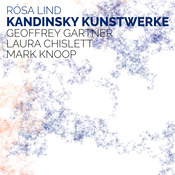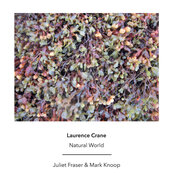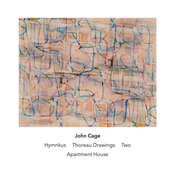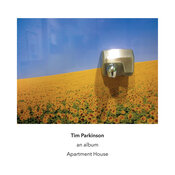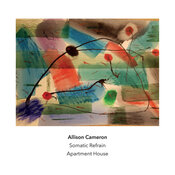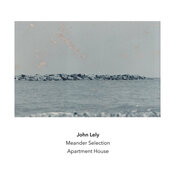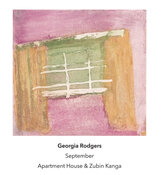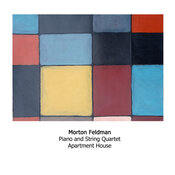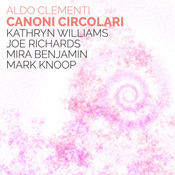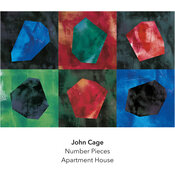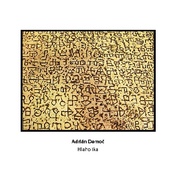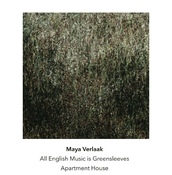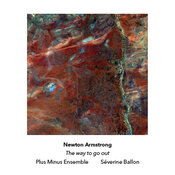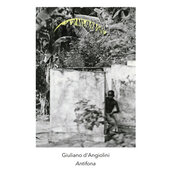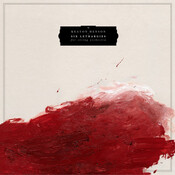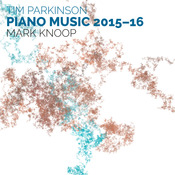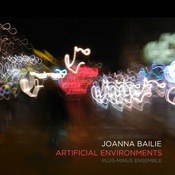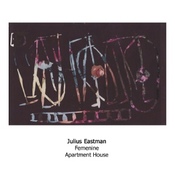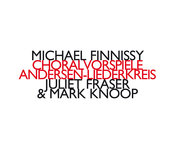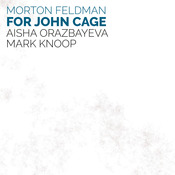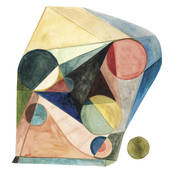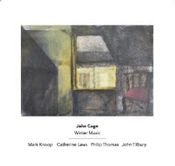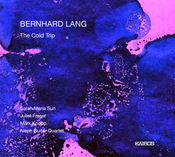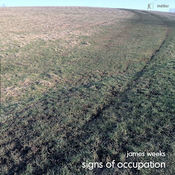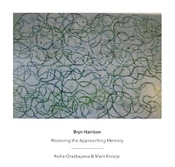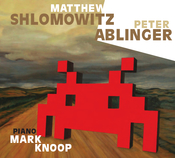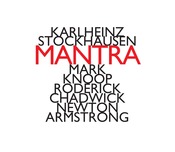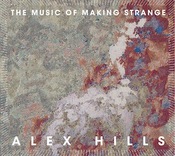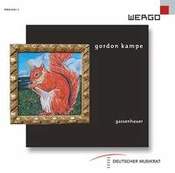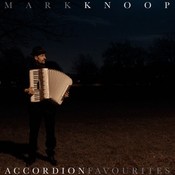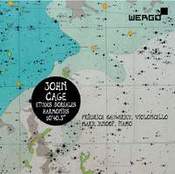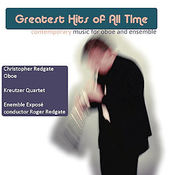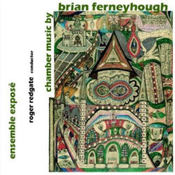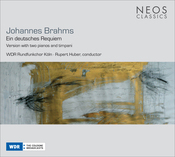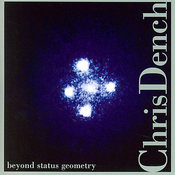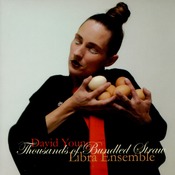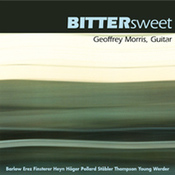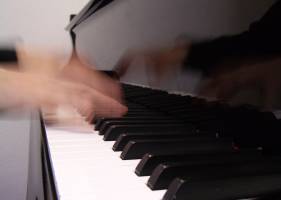
- “one of the most brilliant pianists of the contemporary repertoire” The Sunday Times
performances/from/20051018/to/20051019. However, you may have been looking for this page. Please use the main menu at the top of the page to continue browsing this website.Recordings
This album features three works from a four-work cycle, each of which has as its starting point a canvas by Wassily Kandinsky and travels on to reflect and refract mythological and scientific views of astronomical phenomena. The common thread is one of perspective: Lind (external link) observes a similarity in ‘the way the eye approaches either Kandinsky’s painting or scans the vastness of the sky in search of stellar focal points of light in the black sea of night’.
With Geoffrey Gartner, cello; and Laura Chislett, flute.
| Rósa Lind | Extrema: A Galilean Sarabande | 200113 |
| Rósa Lind | Courbe dominante | 200613 |
| Rósa Lind | Trente | 2009-23*40 |
With Juliet Fraser (external link), soprano. In three movements: Field Guide, Chorus and Seascape.
| Laurence Crane | Natural World | 2021*45 |
Reviews of this recording
The work is suffused with a strange beauty. … This haunting melancholy helps to make Natural World such a memorable release.
read full review
Natural World, for voice, piano and electronics, was composed in 2021, and recorded by Juliet Fraser (external link) (soprano, Casio) and Mark Knoop (piano, electronics). Fraser asked
Laurence Crane if he’d write “a ‘song cycle’… a substantial vocal work in several parts, with unified subject matter”, as the composer comments. After they discussed the work of marine biologist Rachel Carson, Crane decided to write something about the natural world.The cycle opens with piano and voice, but field recordings become prominent. Bird samples at the end of “Field Guide” segue into the dawn chorus, which underpins the second section “Chorus”. The third section “Seascape” features a constant, industrial-sounding low hum that creates a disturbing feeling — continuous sustained chords made of sine tones, played by Knoop on synthesizer keyboard. He also plays samples of E-bows on low harp strings, recorded with Rhodri Davies some years ago.
The work is suffused with a strange beauty. Crane prefers to set a neutral text rather than existing poetry — otherwise, he argues, you “erode what that poem is by imposing your own musical activity… rhythms and internal ‘music’ have been obscured”. Thus he can’t hear Wilfred Owen’s Strange Meeting without hearing Benjamin Britten’s setting in his War Requiem.
I wonder. Wouldn’t a poem be eroded when someone reads it in a striking or individual way? In Natural World, the lyrics comprise meaningful sentences taken from a natural history book, but decontextualised. It’s like someone coming up to you and saying, apropos of nothing. “The grebe catches insects on the wing”. Likewise the tonal harmonies, deprived of their traditional setting and thus meaning.
Perhaps that explains a further feature. Producer Simon Reynell finds a strong vein of melancholy in the music. “It wouldn’t appear on Another Timbre if there wasn’t,” he adds. This haunting melancholy helps to make Natural World such a memorable release.
hide full review
Natural World brings together the ecstatic stillness of nature and the mundane ordinariness of reading a science article.
read full review
Is it too soon to call a work ‘classic Crane’? Well, I’m going to go ahead and say that Natural World for soprano and piano/sampler is classic Crane. Commissioned by Juliet Fraser (external link), the Oxford Lieder Festival and Musica Sacra Maastricht, Natural World brings together the ecstatic stillness of nature and the mundane ordinariness of reading a science article. At almost an hour in length, it is Crane’s longest concert piece to date, and last year it won the Small Chamber Ivor Novello Award.
Natural World draws on the American marine biologist Rachel Carson and, Crane says, ‘continues my preoccupation with the poetic qualities of factual, list-based texts’. The voice, in repeated tonally inflected phrases, sings about ecological life in strings of neutral terminology (‘winter visitor … great northern diver … dead leaves … grain, grass and other vegetation …’). After a while the soprano drops semantics altogether and, in counterpoint with the piano, sings wordless glissandos and melismatic-style flourishes. The piano style is spare, characterised by Satie-style I/IV triads, pentatonicism, and Feldmanesque repetition and variation. In the fermatas between phrases, sampled birdsong starts appearing. In the last part, ‘Seascape’, which features maritime sounds, Fraser is accompanied by sustained Casio keyboard tones, the work eventually ending on a bright sixth chord.
But description only goes so far here. If I were pushed further, I might say that this album evokes the humdrum delirium of a person dozing in a deckchair in their garden on a summer afternoon, a broadsheet over their chest, the sound of birdsong mixing in their dreaming mind with a half-read newspaper article on climate change, English whimsy radiating in light rays through cloud cover. At least, that’s how it sounds to me. Perhaps the highest compliment I can pay the album is that it’s art, it’s challenging, it’s distinctive and it really does politely ask you, dozing in your deckchair, to engage with and try to make sense of it.
hide full review
Apartment House (external link) realise seven works by the pioneering US experimental composer. The first six pieces are text scores for open instrumentation, while Tree/Peace is a seven movement work for violin, cello and piano that specifies pitches, while still leaving a lot of freedom for interpretation.
| Pauline Oliveros | Tree/Peace | 198440 |
Piano Trio (violin, cello, piano) in 25 movements. Plus Minus Ensemble: Mira Benjamin, violin; Alice Purton, cello; Mark Knoop, piano.
| Tim Parkinson | Piano Trio 2020 | 2020*56 |
A series of five haunting chamber works by UK-based composer Martin Iddon (external link). The titles of the pieces are taken from different kinds of water nymphs in Greek mythology. Beautifully performed by Apartment House (external link).
| Martin Iddon | crinaeae | 2015*13 |
| Martin Iddon | pegaeae | 201615 |
| Martin Iddon | limdanes | 201518 |
| Martin Iddon | potameides | 2017*18 |
| Martin Iddon | eleionomae | 2012*7 |
Three relatively late works by John Cage (external link), performed by Apartment House (external link). Two (1987) was the first of his number pieces, while Hymnkus (1986) is an one-off from the year before. Thoreau Drawings (1974) is a very rarely performed work in two halves. In the first section the ensemble interpret shapes taken from drawings by Henry David Thoreau, and the second half is a (mono) field recording made at dawn in August 1974 by the composer David Behrman in the small town of Stony Point, NY.
| John Cage | Two | 198710 |
Five chamber works by Tim Parkinson, performed by Apartment House (external link). One violin solo, two pieces for violin and piano, one quintet and one septet.
| Tim Parkinson | septet | 200716 |
Four works by the Canadian composer Allison Cameron (external link). Somatic Refrain (1996) is a work for solo bass clarinet, played by Heather Roche. Pliny (2005) and Retablo (1998) are for sextet and quintet respectively, both played by Apartment House (external link). H (2008) is for a trio of guitars and banjo, played by The Allison Cameron Band.
| Allison Cameron | Pliny | 200517 |
| Allison Cameron | Retablo | 199825 |
Seven recent chamber pieces by John Lely: four string quartets, two solo piano works and one short electronics piece. All performed by Apartment House (external link).
| John Lely | Nocturne | 20176 |
| John Lely | for Philip | 201320 |
| Georgia Rodgers | St. Andrew’s Lyddington | 20178 |
| Georgia Rodgers | York Minster | 20186 |
| Georgia Rodgers | September | 201914 |
Apartment House: Mark Knoop, piano, Mira Benjamin and Gordon Mackay, violins, Bridget Carey, viola, Anton Lukoszevieze, cello
| Morton Feldman | Piano and String Quartet | 198590 |
Reviews of this recording
A spellbinding performance, recorded last March at London’s Henry Wood Hall, features pianist Mark Knoop with a quartet of string players from the ensemble Apartment House (external link).
read full review
Piano arpeggios glint like bright light cresting ripples in water. Wispy chords float with disconcerting reticence from a quartet of strings. Perception of silence in regular pauses is illusory, as is the impression of routine repetition and recap. Seemingly discrete events overlap; the piano’s sustain pedal glows in the gaps. This late Feldman (external link) opus is a magisterial accomplishment and a sustained evasion; an invitation to get lost. A collection of Erik Satie’s writings was published as Memoirs Of An Amnesiac. This long, circuitous Feldman composition, so dependent upon his finely cultivated intuition and refined grasp of music’s secret sources and latent dimensions, might have shared that title. A spellbinding performance, recorded last March at London’s Henry Wood Hall, features pianist Mark Knoop with a quartet of string players from the ensemble Apartment House (external link).
hide full review
Exquisitely recorded and played, just the right amount of necessary grain and whisper in the strings (not to mention respiratory quality) and such touch on the piano. Great stuff.
read full review
The question arises every so often: Do we really need any more Morton Feldman (external link) recordings? The obvious answer is, “sputter of COURSE we do!” Piano and String Quartet, originally written for Aki Takahashi and the Kronos Quartet, doesn't seem to get recorded as often as other late works. I have five or six but the recent issue on Another Timbre with Mark Knoop, Mira Benjamin, Gordon MacKay, Bridget Carey and Anton Lukoszevieze is my favorite thus far. Exquisitely recorded and played, just the right amount of necessary grain and whisper in the strings (not to mention respiratory quality) and such touch on the piano. Great stuff.
hide full review
Mechanical puzzles such as canons were not dry exercises for Aldo Clementi but spurred his creative interest in movement, time and space. In these four works he creates intricate counterpoint from twelve flutes; four pairs of waltzing violins; a mixed quartet; and an ensemble of tuned percussion, which summons a bustling cityscape in the heat of summer. The binaural format heightens the sense of music that moves in space as well as time.
| Aldo Clementi | Ouverture | 19847 |
| Aldo Clementi | l’Orologio di Arcevia | 19799 |
| Aldo Clementi | Melanconia | 20015 |
| Aldo Clementi | Canone circolare | 20063 |
Reviews of this recording
In this release, a bold statement is made right away: a piece for 12 flutes is recorded by a single flautist, and a piece for eight violins is recorded by a single violinist. So on for the whole disc: this is recorded music. Not just out of convenience, but for reasons imminent to the music, such that it’s almost an argumentative point on the part of the label.
read full review
Any discussion of Aldo Clementi’s music must begin, it seems, with the technique of canon. No doubt, it’s a reasonable place to start. Comparisons to the Musical Offering or the Art of Fugue are not uncalled for. But in listening to all that dust’s recent recording of four works from the twentieth-century contrapuntal master, I find my attention drawn to just about everything else.
In this release, a bold statement is made right away: a piece for 12 flutes is recorded by a single flautist, and a piece for eight violins is recorded by a single violinist. So on for the whole disc: this is recorded music. Not just out of convenience, but for reasons imminent to the music, such that it’s almost an argumentative point on the part of the label.
The packaging and liner note both highlight the binaural aspect of the recordings, recommending ‘good quality over-ear headphones’ and for good reason. The real stars of this show are Mark Knoop and Newton Armstrong. The former particularly for his curation as producer: a timbral through-line emerges across the four pieces, arcing from the right of a spectroscope to the left, gently guiding us from airy and high to earthy and low. The latter in his capacity behind the recording console, particularly for the exquisite mixing and mastering. In every sense, this recording sounds good.
Not long into the first piece, I was reminded of my first encounter with fractal-zoom videos as a teenager, where the infinite variety yet unmistakable signature of the Mandelbrot set is explored through a process of finer and finer visual magnification. Like the Mandelbrot set, a canon as written by Clementi is essentially a process of computational iteration. They also share a certain automatic nature; a mechanism is set in motion that produces its own results. They also share, I would argue, a clearly defined membrane between the pure thought, or, in mathematical terms, the function, and the aesthetic presentation of that function. Each iteration of the function that produces the Mandelbrot set is shaded a different colour, producing the recognisable imagery. With Clementi’s work, at least the four pieces presented here, I would argue that the instrumentation, the duration and the spatialisation as rendered by the production are an arbitrary form draped upon contrapuntal-geometric material that is (in theory) eternal. Hence, one musician performing the role of 12 doesn’t flatten but, rather, emphasises the music. It is as if, as in the course of a fractal zoom, one stops and beholds the current spectacle, then some time later marvels at a new spectacle several orders of magnitude smaller, and so on. There is a strong sense of unity across the whole. And so it is difficult to describe one piece without also describing the others. What really differentiates one work from another is the instrumen tation. Perhaps, then, Clementi could be equally lauded for his orchestration as for his canons.
The aptly named Ouverture (1984) opens the disc, a piece for three flute quartets, all per formed by Kathryn Williams. Sinusoidal melodic motion wafts around at various pitch levels. Listening to the work is like walking the halls of a conservatory, the students all practising their scales at different pitch levels and tempi. Given that there are 12 contrapuntal lines, what is remarkable is not the density of the music but, rather, its crystalline clarity, accentuated by Williams’ focused and pure flute tone.
L’orologio di Arvecia (1979) smoothly transitions from glassy flute to metallic ping: two glockenspiels, two celestas, two vibraphones, piano, chimes and gong. Clockwork imagery is obvious to the point that it recedes into the back ground. Coming to the fore is the elegant shape carved over the entire nine-minute span. The piece is divided into two halves, the first for the high instruments, the second for the low instrument, bound together by the gong’s iridescent blooms of sound.
Melanconia (2001) is recorded by eight Mira Benjamins with a drawling husky violin tone. Composed in pairs of violins, one of which is muted, it sounds like a hurdy-gurdy as imagined by M. C. Escher. Three blocks of identical or similar material follow in sequence, reversing the roles of muted and unmuted instruments, and gradually reducing the tempo each time, thus gradually closing the spectral space.
Canone circolare (2006) concludes the album on an ambiguous tone. Or, perhaps, an ambiguity underlying all the preceding works finds its most distilled expression here. ‘The score,’ according to Laura Tunbridge’s liner notes, ‘indicates that one group of four players is echoed by another, but how many times to repeat, how to assign parts to the repeat, or how the repeat might interlock with itself is left unclear.’ As with the previous piece, the tempo gradually sinks, the timbre grad ually dulls, the energy gradually fades.
hide full review
Most sonically spectacular of all is the metallic sound world of L’Orologio di Arcevia, with its jangling array of piano, tubular bells and ’spiels, apparently inspired by the sound of a clock in a belfry. It comes wonderfully alive in the performance by Joe Richards and Mark Knoop, and heard as intended through headphones, it’s fabulously involving, too.
read full review
Two years ago, all that dust released a performance of
Stockhausen ’s Kontakte recorded in binaural format, which made marvellous sense of the spatial effects between the instrumental and electronic sounds. The label has now given binaural treatment to four pieces by Aldo Clementi, who died in 2011 at the age of 85.Clementi was a member of the same generation of avant-garde Italian composers as Bruno Maderna, Luigi Nono and Luciano Berio, though he never adopted the concepts of total serialism as eagerly as his better-known contemporaries. Instead, he sought out other ways of organising his music and creating the intricate polyphonies that he imagined, and found what he needed by going back to the age-old techniques of imitation and canon.
The music he composed using these principles from the 1970s onwards was playful and joyous; it sometimes referenced other composers and styles, and was often exquisitely beautiful. Each of the four pieces here, none of them very substantial, is a gem. Ouverture, for three quartets of piccolo, two flutes and alto flute, was written for the great Italian flautist Roberto Fabbriciani, who recorded it alone by multitracking the 12 contrapuntal lines; Kathryn Williams follows Fabbriciani’s example, placing the listener at the centre of its web of intertwining, echoing voices. The four pairs of violins in Melanconia, all played by Mira Benjamin, move in and out of focus as they chase each other around the aural space, while the four instruments (flute, violin, piano and tuned percussion) in the brief Canone Circolare are given the freedom to choose how and at what distance they repeat the gentle material allotted to them.
Most sonically spectacular of all is the metallic sound world of L’Orologio di Arcevia, with its jangling array of piano, tubular bells and ’spiels, apparently inspired by the sound of a clock in a belfry. It comes wonderfully alive in the performance by Joe Richards and Mark Knoop, and heard as intended through headphones, it’s fabulously involving, too.
hide full review
Apartment House realise all of John Cage (external link)’s number pieces for mid-size ensembles.
| John Cage | Five | 1988 |
| John Cage | Fourteen | 199020 |
| John Cage | Five | 1988 |
| John Cage | Ten | 199130 |
| John Cage | Seven | 198820 |

Explorations in polytonality and other musical wonders, Volume 1
bandcamp mk1 (external link), released 17 May 2021| Matthew Shlomowitz | Parlour Nancarrow | 2020*3 |
| Matthew Shlomowitz | Ternary (homophony at the minor 6th, hexatonic cycle at the major 6th) | 2020*2 |
| Matthew Shlomowitz | Larghetto with modal mixture | 2020*3 |
| Matthew Shlomowitz | Difference, repetition and hemiola | 2020*3 |
| Matthew Shlomowitz | Interlude | 2020*4 |
| Matthew Shlomowitz | Classic chord progression with Neapolitan, doubled at the minor 2nd | 2020*3 |
| Matthew Shlomowitz | Variations in octaves | 2020*4 |
Reviews of this recording
There’s much to beguile and stimulate in these clever but deep pieces.
read full review
Australian composer Matthew Shlomowitz (external link)’ witty polytonal cycle is performed by compatriot Mark Knoop. The delightful results are shot through with Dada-esque playfulness. As Knoop comments in a podcast, the pieces ‘have that level of silliness where the music is unashamed at doing what it wants to do’. Some pieces are very difficult, he explains: one was ‘unplayable’ so Shlomowitz replaced it.
This is a home-produced album, recorded in Knoop’s own studio. Most delightful are the two opening pieces. Parlour Nancarrow draws on Conlon Nancarrow’s polyrhythmic player piano studies, as well as thematic material from Percy Grainger’s Country Gardens. It has a ‘light music’ plangency that affectingly counterpoints its Nancarrow-derived complexity. A comparable contrast lies behind Ternary (homophony at the minor 6th, Hexatonic cycle at the major 6th), with its senseless ornamentation and bizarre reversals of mood.
As one reviewer comments, the pieces reference kitsch without becoming it. Classic chord progression with Neapolitan, doubled at the minor 2nd is learned and idiotic, Difference, repetition and hemiola explosive and bombastic. There’s much to beguile and stimulate in these clever but deep pieces – I look forward eagerly to Volume 2.
hide full review
Four chamber works by the Spanish-based Slovak composer Adrián Demoč, performed by Apartment House (external link) and by students of the Janáček Academy of Music, Brno.
| Adrian Demoč | Ma fin est mon commencement | 201912 |
| Adrian Demoč | Hlaholika | 202020 |
Five provocative and beautiful works by the young Belgian composer Maya Verlaak (external link), realised by Apartment House (external link) and soloists Sarah Saviet and Mark Knoop.
| Maya Verlaak | Formation de Mark | 2020*10 |
Apartment House (external link) play Antoine Beuger’s exquisite hour-long piece from 2004. Wonderfully immersive and absorbing sounds that feel as if they are touching eternity.
| Antoine Beuger | Jankélévitch sextets | 200460 |
Three works for small ensemble and electronics by the Australian-born, UK-resident composer Newton Armstrong (external link), played by Plus Minus Ensemble and cellist Séverine Ballon (external link).
| Newton Armstrong | thread — surface | 2018*12 |
| Newton Armstrong | A line alongside itself | 201922 |
| Newton Armstrong | The way to go out | 2016*12 |
A disc of d’Angiolini’s chamber and orchestral works, including a beautiful duo recorded with Manuel Zurria, flute.
| Giuliano d’Angiolini | Antifona | 201812 |
Mark Knoop conducts the Royal Liverpool Philharmonic Orchestra in Keaton Henson’s multi-sensory work which explores themes of mental illness, trauma and empathy.
| Keaton Henson | Six Lethargies | 2018*75 |
Voices cut across our inner and external experiences. In this first CD to feature exclusively the vocal music of Cassandra Miller (external link), we encounter a variety of these voices, from those that we imitate, to those we hum along to, to those that emerge unbidden.
Performed by Plus-Minus Ensemble with Juliet Fraser (external link), soprano.
| Cassandra Miller | Bel Canto | 201017 |
| Cassandra Miller | Traveller Song | 2017-18*21 |
| Cassandra Miller | Tracery : Hardanger | 201715 |
| Cassandra Miller | Tracery : Lazy, Rocking | 20178 |
The piano pieces on this recording were composed between the summer of 2015 and the end of 2016. Tim Parkinson’s personal history with the instrument, and the way his music sometimes alights on familiar figurations or scatters them, feeds into bigger questions about what it means to continue to write piano music in the twenty-first century.
| Tim Parkinson | piano piece 2015 | 2015*18 |
| Tim Parkinson | 2016 No.1 | 20169 |
| Tim Parkinson | 2016 No.2 | 2016*5 |
| Tim Parkinson | 2016 No.3 | 2016*4 |
| Tim Parkinson | 2016 No.4 | 2016*4 |
| Tim Parkinson | 2016 No.5 | 2016*3 |
| Tim Parkinson | 2016 No.6 | 2016*5 |
| Tim Parkinson | 2016 Last Piece | 2016*3 |
| Tim Parkinson | we’ll meet again | 2015*14 |
The chamber works on this portrait album, the latest in NMC’s Debut Discs series, demonstrate Joanna Bailie (external link)’s distinct and powerful skill of mixing field recordings and other found audio material alongside partial transcriptions, which are played simultaneously on acoustic instruments. The effect is otherworldly and immersive.
| Joanna Bailie | Symphony–Street–Souvenir | 2010/201414 |
| Joanna Bailie | Trains | 201410 |
| Joanna Bailie | Artificial Environments Nos.1–5 | 2011¶20 |
| Joanna Bailie | Artificial Environment No.8 | 2012-13*18 |
Apartment House (external link) give new life to Julius Eastman’s irrepressible ensemble piece from 1974. Unbounded energy and clarity of sound. Unmissable.
| Julius Eastman | Femenine | 197470 |
Apartment House (external link) plays chamber music by Canadian composer Linda Catlin-Smith.
| Linda Catlin Smith | Velvet | 200715 |
“My music contains many music, but impure, misremembered, smudged and melted, torn apart yet not completely erased.” — Michael Finnissy (external link)
| Michael Finnissy | Choralvorspiele (Koralforspill) | 2012*33 |
| Michael Finnissy | Andersen-Liederkreis | 2016*45 |
Feldman (external link)’s 75-minute work dedicated to his friend John Cage (external link) was written in 1982. In this new version, Aisha Orazbayeva (violin) and Mark Knoop (piano) set out to draw the listener into the charged space between the performers.
| Morton Feldman | For John Cage | 198275 |
A new recording of one of Cage (external link)’s least known number pieces. Philip Thomas and Mark Knoop’s realisation stretches this piece for two pianos to over two hours in length, finding new and unexpected resonances.
| John Cage | Two² | 1989120 |
Reviews of this recording
It’s 128 minutes of pure, thought-compelling, perception-enhancing, down to earth bliss. Can’t ask for more.
read full review
Of Cage (external link)’s so-called “Number Pieces”, works composed late in his life, Two² (1989) seems to be one of the least frequently recorded. It was written for the piano duo Double Edge (Edmund Niemann and Nurit Tilles) though it appears that the premiere was performed in May 1990 by Rob Haskins and Louis Goldstein; it’s available to be heard on YouTube. That performance lasts just over an hour and twenty-five minutes and the two others I can locate, by Josef Christof/Stefan Schleiermacher (released on MDG in 2000, as part of the “Complete Piano Music”, volume 5) and a live video by Beata Pincetic and Christos Sakellaridis last just over 46 and 36 minutes respectively.
Philip Thomas, in an interview published on the Another Timbre site and partially reproduced in the sleeve of this release, mentions having heard the piece both in live performance and on recording, remarking, “...it just didn’t draw me in in the way that most of Cage’s number pieces do. To my ears there were too many notes, too much material in the piece such that I quickly lost interest.” But reading the score himself and calculating what he thought was an appropriate amount of time to spend on each measure, he arrived at a potential duration of around two and a half hours. The current recording clocks in at just short of two hours and eight minutes. Thomas remarks, “There are no instructions about duration, so any and all durations are possible and valid, but I think that taking it at the pace we do at least brings a different perspective to it, and reveals other things about the piece that I’d not heard before.”
Having listened to the three other versions, online, I have to say that, as generally enjoyable as those are to my ears, Thomas’ intuition is exactly correct. The sense of pace is almost viscous without any connotations of stickiness or anything syrupy. If you can imagine very slowly flowing water, that’s close. Maybe cold lava. Notes suspend in the air for a few moments, then softly fall and disappear. My impression is that there’s more in the mid- and mid-low range of the piano than elsewhere, a real roundness in the tonality, a thickness. The sequences have something of a darkly Romantic character, as though extracted from a larger work, slowed way down, carefully examined and considered. As in Feldman, there’s somehow a sense of forward progression though never the slightest indication of a goal. For what it’s worth, I never get the impression of two pianists, just one strong, coursing river of music. It’s 128 minutes of pure, thought-compelling, perception-enhancing, down to earth bliss. Can’t ask for more.
A major achievement.
hide full review
It is impossible to describe the music’s rapt unfolding in anything even orbiting a meaningful way. … This version is more intimate than a concert hall experience and also somehow larger than life, combining the potency of poetic invocation with the all-encompassing narrative arc of the finest stories. It will be some time before I have the pleasure of encountering either Cage or this piece to such revelatory effect.
read full review
When Wolfgang Rübsam rerecorded the Bach organ works for Naxos in the 1980s and 1990s, his aesthetic had shifted from a relatively rapid mainstream to a contemplative and ornamented slowness that irritated many critics. I loved it and continue to love it, partially because Rübsam is bringing out relationships in the music’s motivic and harmonic development that seem fresh in light of his newfound flexibility. I was reminded of the radical nature of Rübsam’s accomplishment when listening to this new set from the excellent Another Timbre label, which has demonstrated continuous and increasingly important devotion to Cage’s work. Philip Thomas and Mark Knoop consider this late Cage two-piano work from an angle similar to latter-day Rübsam, with the proverbial ear toward an entrancing integration of detail and beauty.
Two² was composed in the summer of 1991. It is one of the few number pieces that does not use Cage’s late-period time brackets to determine when events occur. Instead, the piano duo is confronted by thirty-six lines of music, each containing five measures. The microevents are divided into patterns of five and seven, as are syllables in Japanese Renga. While the pianists play measures in their own tempi, of which Cage conceives as the internal clock, they can only move to the next measure when both have completed the previous one.
Tempo is one of the keys to this version’s unique kind of success. some performances come in around the forty or forty-five minute mark, and the longest I’ve heard takes just about an hour and a half. Philip Thomas and Mark Knoop turn in a rendering that exceeds two hours. Anyone who has heard Thomas’ recent and breathtakingly beautiful recording of Cage’s piano concerto with Apartment House knows what to expect. Both Thomas and Knoop have come to the opinion that a slower tempo reveals more detail in the sonorities with which Cage was occupied late in his life. In an interview on Another Timbre’s website, Thomas compares them to those in Winter Music, a late 1950s piece, citing huge differences in that earlier composition’s harmonic approach. Two² conjures a world of what might be construed as more conventional sonorities shorn of context, and if they don’t necessarily resolve according to tradition, this new version exposes their individuality as they articulate and are allowed to fade in slow motion. Cage instructs the performers to play each sound quietly but equally, which is what this duo accomplishes.
It is impossible to describe the music’s rapt unfolding in anything even orbiting a meaningful way. Unlike any other recording I’ve heard, and there aren’t very many, Thomas and Knoop create a soundworld absolutely commensurate with a large-scale late piece like 103, Cage’s final orchestral masterpiece. We don’t often think or talk about beauty in Cage’s music, but it is here in abundance. Unlike Winter Music or Music of Changes, Cage’s Two² harmonies glide and envelop, even the ones with clusters often anticipate a kind of resolution. Sample the complex low-registral dissonance at 10:21 of the second disc as it fades slowly, leaving a meditative space for an octave E-flat, expertly voiced and precisely placed. After a crystalline major third at 25:07 of the first disc, we get a quietly apocalyptic ninth in the bass, so similar and yet totally alien to the one that opens the score. These are simply fleeting images emerging from a hugely diverse canvas. The recording is closer than any other version I’ve heard, a sure-fire way to force every articulation and sustain to the fore until they fade into the subsuming silences separating measures. The piano itself often sounds like an organ, so long and colorful are the sustains. This version is more intimate than a concert hall experience and also somehow larger than life, combining the potency of poetic invocation with the all-encompassing narrative arc of the finest stories. It will be some time before I have the pleasure of encountering either Cage or this piece to such revelatory effect.
hide full review
| Michael Finnissy | Piano Concerto No 3 | 1978¿25 |
| Michael Finnissy | ...above earth’s shadow | 198518 |
A realisation of John Cage (external link)’s Winter Music for four pianos, with Catherine Laws, Philip Thomas and John Tilbury.
| John Cage | Winter Music | 195715 |
Reviews of this recording
Leave it to another timbre to grapple with all of this and deliver a dazzling recording of the piece. The four pianists here are John Tilbury, Philip Thomas, Mark Knoop and Catherine Laws, all of whom have a depth of experience with the music of Cage and the practice of contemporary music performance.
read full review
Producing a recording of John Cage’s Winter Music is a challenging proposition. First off, the piece is scored for between one and 20 pianists. Then there is the score itself, a collection of 20 unnumbered pages which provide an abstracted framework which, as the liner notes to this recording explains, “are less a score in themselves than a means for producing a score.” So, the trick is to find multiple pianists who are able to dig in to their parts, come up with their own realizations and then play these in conjunction with each other. (Not to mention, of course, the obstacle of finding a place to record that has multiple pianos.) Leave it to Another Timbre to grapple with all of this and deliver a dazzling recording of the piece. The four pianists here are John Tilbury, Philip Thomas, Mark Knoop and Catherine Laws, all of whom have a depth of experience with the music of Cage and the practice of contemporary music performance.
Winter Music, written in 1957, came at a point where Cage was expanding his use of aleatory processes not only in the way he produced the score itself, but also in the way that the resulting score functions for performers. He had been incorporating the use of various chance operations in his compositional practice but the end result was always a fixed score to work from; notes plotted within the conventional framework of staffs. For Winter Music, he expanded indeterminacy to the framework itself. John Holzaepfel explains it well in his paper “David Tudor, John Cage, and Comparative Indeterminacy.” The author explains, “wherever [Cage] found an imperfection in the paper, he placed a solid note head, then overlaid the results with a single staff that turned the note heads into notes. So far, this was nothing new. But whereas in “Music for Piano” he had fixed the notes with clefs on a grand staff, now Cage “floated” the clef signs with chance operations and thereby rendered the pitch content of “Winter Music” indeterminate. So that the performer could decide which of the clefs to apply to the notes that follow them, Cage included a pair of numbers as a guide… Reading this notational system can make for rough going in performance.”
Cage’s performance instructions, referenced in the liner notes to this CD intentionally do little to nail things down in specific ways. “The notation, in space, may be freely interpreted as to time. An aggregate must be played as a single ictus. Where this is impossible, the unplayable notes shall be taken as harmonics prepared in advance. Harmonics may also be produced where they are not so required. Resonances, both of aggregates and individual notes of them, may be free in length. Overlappings, interpenetrations, are also free.” Clear? But then take one listen to this recording and everything crystallizes. For the recording, each of the players was assigned five pages of the score through chance procedures and they agreed to an overall duration of 40 minutes. Then each went off to prepare their parts. There was no rehearsal, and the piece was played only once. Yet the clarity of their personal inroads into the score immediately comes through, creating a collective unity to the piece. Much of the lucidity comes from the intrinsic “non-framework” of the score itself paired with the guidelines of the instructions. While unfixed, the units of notes must be played with a “single ictus,” a clear attack. And while “overlapping and interpenetrations” are free, the graphical sparseness of the score itself and the overall duration demand an ascetic dedication.
What is striking is how fully attuned the four pianists are from the start. One hears the exacting soundings of clusters and chords placed with considered deliberation. While overlaps and convergences occur, an overall spaciousness is maintained. The four maintain their playing as a continuous flow across the 40-minute duration, eschewing any sense of start, arc or conclusion. It is as if this were a slice, mid-stream, of an expansive performance. What makes this work so well is that each of the performers attacks their parts with an eloquent self-assurance. Notes are sounded and keen attention is paid to resonance and decay. They are also acutely aware of the balance between sound and silence, not only of their part but to the way that the four parts intersect. Kudos are also due to Simon Reynell’s recording which does an admirable job of placing the pianists within the sonic field, providing an immersive dimensionality.
hide full review
It’s difficult to imagine four musicians better equipped — in terms of sensibility as well as technique — to play this austere yet compelling piece.
read full review
Winter Music is vintage Cage (external link), composed 60 years ago yet freshly realised with each performance. Among its numerous indeterminacies the score allows for up to 20 pianists. On this occasion its 20 pages, each carrying isolated often ambivalent and sometimes unrealisable chords, were divided equally between Philip Thomas, Catherine Laws, Mark Knoop and John Tilbury. It’s difficult to imagine four musicians better equipped — in terms of sensibility as well as technique — to play this austere yet compelling piece. Listening to Winter Music is like discovering tracks in the snow, not forming a connected or continuous trail yet still legible as temporary evidence, lingering traces of cryptic activity. Some notes are sounded with cat’s paw delicacy, deeper impressions are left by emphatic chords and thunderous clusters. Each event is placed decisively and carries its own self-contained clarity, even when others coincide or overlap. The pianists nurture resonance that glows, while bringing tension and suspense to each pause.
hide full review
Bernhard Lang (external link)’s The Cold Trip is a new Winterreise: to re-walk an ancient pathway, overwriting it with new trails: a hommage to Schubert, an exploration, a time-trip into the unknown. Part 1 for voice and guitar quartet (Sarah Maria Sun and Aleph Guitar Quartet); part 2 for voice, piano and laptop (Juliet Fraser (external link) and Mark Knoop).
| Bernhard Lang | Monadologie XXXII The Cold Trip part 2 | 2014/15*30 |
Morton Feldman (external link)’s last work, with Aisha Orazbayeva, violin; Bridget Carey, viola; Anton Lukoszevieze, cello.
| Morton Feldman | Piano, Violin, Viola, Cello | 198775 |
Reviews of this recording
The four musicians provide a truly masterly performance of this very subdued, contemplative piece.
read full review
Piano, Violin, Viola, Cello werd recent uitgebracht door another timbre in een uitvoering van pianist Mark Knoop, violiste Aisha Orazbayeva, altvioliste Bridget Carey en cellist Anton Lukoszevieze, allen leden van het Londense Apartment House. De vier musici verzorgen een werkelijk meesterlijke uitvoering van dit zeer ingetogen, contemplatieve stuk. Vinden we in Trio nog duidelijke patronen waarin nog iets van melodie zit, in dit stuk ontbreekt dat totaal. De hoes met het schilderij ‘Landscape with Wall’ van Andrew Lutz is wat dat betreft uitstekend gekozen. Het desolate gevoel dat dit schilderij uitstraalt, horen we ook in de muziek. Wat daarbij helpt is de kwaliteit van de opname die label eigenaar en opnametechnicus Simon Reynell maakte in de Henry Wood Hall in Londen. De lichte echo die de instrumenten hier meekrijgen, versterkt de sfeer van dit stuk onmiskenbaar.
hide full review
The concentration is palpable, the effortless synchronisation suggesting telepathy. Pianist Mark Knoop stands out, his every whisper compelling. Don’t think about shelling out for a course on mindfulness — buy this instead.
read full review
Morton Feldman (external link)’s output can serve as a useful post-Christmas palate-cleanser. His is music stripped down to the barest essentials. Piano, Violin, Viola, Cello was Feldman’s final work, an unclassifiable quartet where the participants communicate with the subtlest of gestures. The lack of conventional musical structure is liberating. Don’t sit, pencil in hand, waiting for an emphatic recapitulation or a juicy cadence. Instead, there’s a stately progression of soft string chords overlapping bell-like piano notes. Feldman occasionally hints at conventional diatonic harmony, but these moments don’t jar or stand out unnecessarily. Ideas are half-recalled; tiny motifs are almost repeated.
This intense, emotionally-charged performance lasts for 74 minutes. Near the close, the string voices begin to start their chord notes separately, and a rising piano figure signals the work’s close. That you can’t switch off is largely down to these players. The concentration is palpable, the effortless synchronisation suggesting telepathy. Pianist Mark Knoop stands out, his every whisper compelling. Don’t think about shelling out for a course on mindfulness — buy this instead. Production values are superb, from Sheffield-based Another Timbre. No notes are provided, but Feldman probably would have preferred it that way.
hide full review
Its frail beauty was realised in London at the start of this year by Mark Knoop, Aisha Orazbayeva, Bridget Carey and Anton Lukoszevieze, a quartet finely attuned to this final flourish of a life in music, winding down and washing out.
read full review
Another Timbre provides a no less congenial home for Feldman (external link)’s music, but there’s unmistakably an etiolated feel to Piano, Violin, Viola, Cello, completed close to the end of the composer’s life. Its frail beauty was realised in London at the start of this year by Mark Knoop, Aisha Orazbayeva, Bridget Carey and Anton Lukoszevieze, a quartet finely attuned to this final flourish of a life in music, winding down and washing out. To hear its pallid drifting tones is like peering at Robert Rauschenberg’s Erased De Kooning Drawing, catching fleeting intimations in the traces of a faded design.
hide full review
While it is in progress, its twin fascinations lie in the smooth, effortless ease with which Feldman achieved that evolution without disquieting the listener, and the skill with which the quartet perform the music without occasioning comment.
read full review
Piano, Violin, Viola, Cello (often abbreviated to “PVVC”) was Morton Feldman (external link)’s final composition, receiving its premiere on July 4th 1987, less than two months before the composer’s death from pancreatic cancer on September 3rd. This recording of the piece dates from January 2017 at Henry Wood Hall, where it was recorded by Simon Reynell. The quartet of Mark Knoop on piano, Aisha Orazbayeva on violin, Bridget Carey on viola and Anton Lukoszevieze on cello had performed “PVVC” the previous September at Café Oto, on a night that stuck in the minds of musicians and audience, alike, for being one of the year's hottest.
Having come through that night successfully, the January recording afforded the quartet a valuable opportunity to apply what they had learnt from the Oto performance and the audience's reaction to it. As Knoop has commented, ‘I always like returning to things after a first performance as there are some aspects of the music which can only reveal themselves in performance, no matter how much rehearsal is done.’
The recording runs for seventy-four minutes, making it a challenge to maintain concentration both for the performers and the listener. The composition is as uncomplicated as its title suggests. Lacking any formal structure or obvious peaks and troughs, it evolves at its own glacial pace, with the introduction of even the smallest motif acquiring significance. While it is in progress, its twin fascinations lie in the smooth, effortless ease with which Feldman achieved that evolution without disquieting the listener, and the skill with which the quartet perform the music without occasioning comment.
Throughout, piano and strings operate together as an integrated unit, seeming to think, move, inhale and exhale as one. Altogether, it makes a beguiling listening experience but, because of that, concentration can easily be lost. With time and effort, it is possible to maintain focus throughout, whereupon the true beauty of the piece reveals itself, more and more with each new listening. An important and valuable addition to both the Another Timbre catalogue and the Feldman discography.
hide full review
What is needed is virtuosic simplicity, the toughest trick in the book, and Knoop gets it with violinist Aisha Orazbayeva, violist Bridget Carey and cellist Anton Lukoszevieze.
read full review
“All music is difficult, all music is easy. What defines a successful performance?” Pianist Mark Knoop points out a paradox that applies to most of Morton Feldman (external link)’s works, with their endless expanses of calm, tormented beauty. How to clinch the lack of obvious direction without grinding to a halt? How to find the right space and zen in music that requires intense concentration? In the case of Feldman’s last work, this quartet from 1987, how to make 75 minutes of sun-bleached dissonance unfold in one long breath without aurally asphyxiating your listeners?
What is needed is virtuosic simplicity, the toughest trick in the book, and Knoop gets it with violinist Aisha Orazbayeva, violist Bridget Carey and cellist Anton Lukoszevieze. Their sound is wan and focused; their pacing tiptoes the line between tense and breezy. The music keeps moving like a little boat on a dead-flat lake: the ripples are minute, but they are still there.
hide full review
There is a palpable sense in which Knoop and company get Piano, Violin, Viola, Cello absolutely right.
read full review
Another Timbre has been contributing excellent recordings to the rapidly expanding universe of what might still be called “Classical” music, and nowhere more convincingly than in the shimmering beautiful tapestries woven by Morton Feldman (external link). The label’s double set of Feldman’s earlier piano works would be an excellent place to begin for anyone wishing to slide into familiarity with his work, as it’s wonderfully performed by John Tilbury and Philip Thomas. Pianist Mark Knoop, violinist Aisha Orazbayeva, violist Bridget Carey and cellist Anton Lukoszevieze now put their collective wit and grace into a rendering of Piano, Violin, Viola, Cello; they give a performance of rapt concentration and emotive depth, rivaling and often surpassing any currently available.
Piano, Violin, Viola, Cello, hereafter PVVC, was the composer’s final published work, but to say that it is typical of his late-period compositions is to sell its individuality short. Much is made of Feldman’s penchant for repetition, and his music is sometimes dismissed for it, but for those immersed in Feldman’s vast canvases, each is a labyrinth of non-linear landmarks slowly revealed, connected non-teleologies that still result in a narrative. Tone, chord and the points at which they meet circumvent while intersecting, the material developing in a kind of slow dance of gradual familiarity and reminiscence. The soft dynamic level makes it all a very intimate experience. True, allegiance to influences as disparate as Debussy and Webern are everywhere, but they are also magically and continuously thwarted, so that they must be sought out to be heard at all. Pointillism is there, something approaching traditional harmonic cadence is also present, but no standard resolution or drama on either front is forthcoming.
There is a palpable sense in which Knoop and company get PVVC absolutely right. The closest version to this one comes from the Bridge label, released in 2015, but the new disc presents a more unified string sound, even though single notes regularly traverse the sound stage. It is as if string clusters produce tones not in the score, such is the intimacy and concentration achieved by these three musicians. Those clusters often take center stage, while Knoop’s piano is recorded wide-screen, in such a way as to embrace the strings. His sensitive rendering of the score is caught in a way that is simultaneously close but recessed, giving the whole a three-dimensional presence that reveals Feldman’s blocks of quasi-development in Technicolor.
Maybe it’s the recording that separates this version from the others I’ve heard. It certainly has the unity of a performance, though its spatial characteristics seem to exist outside of any single performance environment. The room disappears, and the music is left to unfold, offering a very different picture when switching from headphones to speakers. This, in combination with excellent musicianship, makes this version of PVVC a model for Feldman study and for future recorded performances of his works.
hide full review
Music by James Weeks (external link). This is new music in every sense — avant-garde, yet essentially straightforward — music pared to its core, not minimalism but avoiding dense and detailed structures. The music has no ostentatious virtuosity but simple, ordinary sounds, mixed and repeated in evolving combinations, and in different ways in each piece, from the loop-building in Looping Busker Music, to the detuned strings of the solo guitar in Digger.
| James Weeks | Looping Busker Music | 2013*15 |
| James Weeks | Three Trios | 2010-1127 |
A composition in five movements for violin and piano. Aisha Orazbayeva, violin and Mark Knoop, piano.
| Bryn Harrison | Receiving the Approaching Memory | 2011-12*40 |
Reviews of this recording
This reviewer has been exclusively focusing on the album for days, an unequivocal sign of gratitude for the disclosure of an unpretentious masterpiece.
read full review
The accuracy of each gesture in Receiving The Approaching Memory is directly proportional to the feeling of unclouded poetry conveyed by Bryn Harrison (external link)’s music, released by another timbre for the second time after 2013’s Vessels. This reviewer has been exclusively focusing on the album for days, an unequivocal sign of gratitude for the disclosure of an unpretentious masterpiece. In terms of sheer imagery, the comparison is that of a blackbird singing in front of the placid waters of a lake, the latter somehow mirroring those sounds in a wonderful connection between the bird’s jargon and the environmental reverberations.
Willing to stick to stringently factual issues, this is a five-movement composition lasting circa 38 minutes, with extremely short pauses interrupting the continuum. Violinist Aisha Orazbayeva — whose playing, merging skill and tenderness, is outstanding — specializes in modern composers while also working in experimental/improvisational settings, her instrumental versatility expressed with compelling naturalness. Mark Knoop is the ideal partner and a virtuoso as well: his sympathetic pianism furnishes the interplay with reflectiveness and grace, echoes of remote derivation enhancing the overall beauty.
There should be no necessity to categorize this small gem. However, on the label’s website a critique appears which, before ending on a slightly more constructive note, describes the piece as follows: “I strained to hear the slightest hint of a pattern, a recognisable shift in key or register, a change in dynamics or pacing or phrasing, the merest lip service to formal development, and heard none. This constant river of babble struck me as frustrating and tedious; who would want to listen to such chaos repeated over and over again, meticulously performed as it was?” Without even taking into account the lack of technical cognition prompting these words I, too, have heard of people getting irritated by birds (whose songs are, exactly like this music, based on interconnected patterns signifying a touching wholeness). If you experience opposite reactions, then consider yourselves fortunate to be capable of distilling drops of vibrational verity from the barrenness of the mind.
hide full review
But most important is the beauty that emerges from this extraordinary dialogue between the piano and the violin, the beauty of these melodic fragments that repeat, complement each other and constantly enrich. More important than the number of issues that may emerge from this listening, the number of emotions that are created by this unique work, beautiful and really touching.
read full review
Les quatre dernières publications du label another timbre ont un point commun : il s'agit de quatre duo qui incluent un violon. Violon/percussion, violon/contrebasse ou violon/piano, des musiciens qui jouent leur propre composition, d'un autre compositeur ou qui improvisent, qui jouent sur les rythmes, les attaques, les mélodies, la continuité, la discontinuité, etc : autant de manière d'envisager la relation entre un violon et un autre instrument. Certains des musiciens publiés cette saison sont connus, d'autres moins, certains ne sont pas vraiment surprenants, mais le plus étonnant d'eux, et le plus touchant, reste Receiving the Approaching Memory, une suite de cinq pièces composées en 2014 par Bryn Harrison (external link) et réalisées ici par Aisha Orazbayeva au violon et Mark Knoop au piano.
Les deux premières choses qui frappent dans cette composition sont certainement les aspects envoûtant et aérien. Lors des premières écoutes, on se laisse bercer par les cellules harmoniques du piano, ces sortes de fragments mélodiques qui se répètent, toujours similaires et toujours différents. Le piano joue sur des répétitions réconfortantes, des fausses répétitions où des éléments de chaque fragment sont constamment réinjectés. Bryn Harrison a ainsi composé une partie pour le piano qui fait sans cesse appel à la mémoire, à la prédiction, qui fait sans cesse appel à certaines questions sans réponses lors de l'écoute : quel élément était présent ? lequel va être encore une fois utilisé ? est-ce que j'ai déjà entendu cette mélodie ? mais où, quand ?
Cependant, toutes ces questions se noient dans le processus continu du violon qui répond au piano. S'il joue aussi sur des fragments mélodiques, c'est de manière beaucoup plus flottante et aérienne. Le violon est ici en glissando rapide, en jouant sur les harmoniques, sur la continuité. Les phrases se répètent également de manière différentielle, mais les techniques de jeu confèrent au violon un aspect beaucoup plus éthéré, aérien et continu, un caractère flou et onirique qui efface tout questionnement pour laisser place à une rêverie pure, à une berceuse atonale rythmée par des intonations en micro-intervalles.
Puis vient un second temps où le discours entre le piano et le violon, entre ces deux formes mélodiques et cellulaires répétitives, revêtent un autre caractère. On parle souvent de dialogues entre deux instruments dans un duo, mais ici, très vite, on a véritablement l'impression que Harrison a fondé un véritable langage et que les deux musiciens parlent ce langage à travers leurs instruments. Si la forme des cellules mélodiques peut évoquer Feldman, les intonations, l'ambitus, et le volume évoquent quant à eux une nouvelle forme de Sprechgesang instrumental. L'étrangeté propre au Pierrot lunaire semble ressurgir dans RTAM (et non RATM...), avec ces drôles d'intonations, ce caractère fantomatique, cette approche simultanément abstraite et onirique des instruments et de l'écriture.
On peut penser beaucoup de choses de cette pièce, on peut se poser beaucoup de questions et émettre de nombreuses hypothèses, et c'est ce qui fait sa force. Mais le plus important reste la beauté qui émerge de ce dialogue hors norme entre le piano et le violon, la beauté de ces bribes mélodiques qui se répètent, se complémentent et s'enrichissent constamment. Plus important que le nombre de questions pouvant ressortir de cette écoute, c'est le nombre d'émotions qu'est capable de susciter cette œuvre unique, magnifique et vraiment touchante.
hide full review
…they do it marvellous justice: violin lines flit about, birdlike, against a glittering piano backdrop, both instruments sounding as quiet and urgent as a whisper made on an inhalation.
read full review
If you don’t know the deft and gossamer music of Bryn Harrison (external link), this album would be a beautiful place to start. The Bolton-born 40-something fits broadly within a British contemporary music bent for clever, subtle minimalism – his own heroes are Feldman, Messiaen, Skempton. There is, though, something especially economical and fantastical about Harrison’s sound; something in the way he repeats and interlocks fine-grained, shimmering material and keeps us spinning in a magical place between stasis, flux and momentum. He wrote Receiving the Approaching Memory for violinist Aisha Orazbayeva and pianist Mark Knoop in 2011 and they do it marvellous justice: violin lines flit about, birdlike, against a glittering piano backdrop, both instruments sounding as quiet and urgent as a whisper made on an inhalation. Orazbayeva is a taut and boisterous player who doesn’t let a single note rest: this music might be repetitive, but every moment is alert, agile and ready to take flight.
hide full review
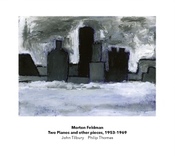
Two Pianos and other pieces, 1953-1969
another timbre at81x2 (external link), released November 2014A double CD of music for multiple pianos from what is arguably the most experimental and interesting period of Morton Feldman (external link)’s development as a composer. Some of the pieces have been very rarely performed or recorded, and have probably never been in better hands.
| Morton Feldman | Piece for Four Pianos | 195715 |
Reviews of this recording
Especially in the hands of what is more or less a supergroup of Feldman (external link) pianists—John Tilbury, Philip Thomas, Catherine Laws, and Mark Knoop—it’s remarkable.
read full review
On the other hand, Piece for Four Pianos (1957), a better known composition, makes moments of (score-based) coordination technically impossible: each pianist moves through the same single page of music slowly, but at their own pace. As a concept this is on a par with 4'33" for its simplicity and clarity; it is a perfect expression of what makes so much of Feldman’s music, and plenty of the music it has inspired, so remarkable. Especially in the hands of what is more or less a supergroup of Feldman (external link) pianists—John Tilbury, Philip Thomas, Catherine Laws, and Mark Knoop—it’s remarkable. The piece is four interpretations, four subjectivities, expressed simultaneously, with total independence yet also with such complete mutual respect that what the piece really sounds like is not a long, strange canon, but rather one super-composition in which the four performers together improvise the phrases and pauses that emerge, unpredictably, from their material.
hide full review
Works by Shlomowitz and Ablinger for piano and found sounds.
Mark Knoop performs Matthew Shlomowitz (external link)’s Popular Contexts, for piano and sampler keyboard and selections from Peter Ablinger (external link)’s ongoing cycle Voices and Piano. Both works deal with collected sonic objects — Shlomowitz’s widely varied samples, ranging from insect noises to airline safety announcements, and the recorded speech of Ablinger’s subjects — forcing them into musical juxtaposition with the piano. Voices include those of Angela Davis, Nina Simone, Amaunalik, Gjendine Slålien and Jacques Brel.
“Popular Contexts and Voices and Piano both confront us with just how particular the act of listening really is, of how many relationships and pieces of information there are both inside and outside of music and sound.” — Adam Harper
| Matthew Shlomowitz | Popular Contexts | 2010*30 |
| Peter Ablinger | Voices and Piano (selection) | 1998-* |
Reviews of this recording
On this disc Ablinger is paired with Matthew Shlomowitz: an adroit combination, deftly and effortlessly presented by Mark Knoop, that clearly highlights their differences.
read full review
The music of Peter Ablinger (external link) (b. 1959) can present some intriguing difficulties. Despite incorporating a great range of materials and methodologies—noise, algorithm, phonography, voice—his work, considered in toto, is an arrestingly unified undertaking. Individual pieces can appear lonely on their own—as shadows of and sketches toward a larger non-appearing project. His pieces can be, on occasion, of greater conceptual than aural interest.
His Voices and Piano series is, however, of great musical interest in both respects; and this CD is a welcome addition to the recorded catalogue of these pieces, adding to the Kairos release from a few years ago. On this disc Ablinger is paired with Matthew Shlomowitz (external link) (b. 1975): an adroit combination, deftly and effortlessly presented by Mark Knoop, that clearly highlights their differences. Shlomowitz, who is Australian by birth, living and working in Britain, arguably doesn’t have the kind of ‘baggage’ that might weigh down a Mitteleuropean composer such as Ablinger. His practice is similar to other British experimental composers—James Saunders, Tim Parkinson, Laurence Crane for example—and, like these composers, his music has, on the surface, a kind of innocence. Nonetheless, I cannot agree with Adam Harper when he writes, in his liner notes to the present disc, that ‘Shlomowitz and Ablinger seem less “knowing” than openmindedly learning as they generate their material – composing as if beginning from an almost pre-intellectual or even pre-human starting point. They approach the world of music and sound like an intelligent but newborn child’. This isn’t correct. While childlike on the surface, this music is certainly ‘knowing’; indeed this is precisely why it is interesting.
In the beginning, it is music that knows and responds to its origins. It may seem bizarre that Cageian experimentalism, a radically and decisively anti-traditional project, has come to constitute a tradition in its own right, but that is the present situation. It is within this context that both Ablinger and Shlomowitz sit, albeit somewhat uneasily. Whatever Cage might have said, in their work both composers highlight the fact that sound is rarely ‘itself’; rather, it always acquires new meanings and associations according to context. Cage’s silence, for example, as Ablinger has pointed out, ‘ceased to be silent long ago: it is crowded now, full of ideas, sentimentality, reminiscences’, not least of Cage himself.
The disc begins with Shlomowitz’s Popular Contexts, a six-movement single-player ‘duet’ for piano and keyboard sampler. The first movement is entitled ‘Free Sound’—contrary to Harper, I think this implies a certain irony. What, one might ask, is sound being ‘freed’ from? And what is it being freed to become? The sampler contributes the sounds of a breakbeat, a slurping drink, a train announcement, videogame gunfire, and a game of ping-pong. These are coupled with a simple piano accompaniment referencing—seemingly—the melody of I Got Rhythm. Shlomowitz thus alludes to popular song, both in the utilisation of a slice of Tin Pan Alley and, in more general terms, by using breakbeats and samples. He further references other aspects of the culture industry: Coca-Cola, sport, the triadic bells of a tannoy announcement. An assemblage of greater Adornian character one could not want.
While Adorno in all likelihood would have hated this music, ‘Popular Contexts’ would be an excellent name for a course of (music) sociology lectures. Shlomowitz’s point, it would seem, is that sound is born of context and destined for further context. There is no free sound, in other words. The rhetorical centre of the piece, it seems to me, is the fifth movement, ‘Weird Twin’, where the opening material returns, this time accompanied by recordings of phone sex, culminating in a faked orgasm—the ultimate in culture-industry contrivance, perhaps—and concluding with further snippets of music reminiscent of some culture or other (mariachi trumpets, tabla drums, electric guitars).
If Shlomowitz’s samples are dislocated (or relocated) bits of familiar sound, retaining the vestige or ‘voice’ of their socio-cultural origins, Ablinger’s voices are even more so. In Ablinger the voice is culture. These pieces dramatise the recorded voice as cultural artefact, or cultural capital, even. The figures Ablinger’s piano meets are not ‘just anybody’, and neither are they celebrity voices encountered with much regularity in the mass media. In past pieces, appearances have been made by Apollinaire, Brecht, Borges and Heidegger, Heimito von Doderer, Humberto Maturana and Forough Farrokhzad. Ablinger has called his voices ‘celebrities’, but if they are, they are a markedly recherché crowd: their inclusion indicates a certain distinction on Ablinger’s part, not to mention his imagined audience. The present disc includes some ‘folk’ voices, Gjendine Slålien, and Amáunalik (both beautiful pieces, incidentally). But even these are culturally enfolded: the former was inspiration for Grieg, her song becoming part of Gjendine’s Lullaby, and the latter was an important source for Danish anthropologist Erik Holtved, the first ethnographer to study the Greenlandic Inuit.
Ablinger has said that in these pieces, ‘music analyses reality’, but he might have just as accurately said ‘music analyses culture’. The voice in this context is something alien to the body—the voice emanates from but disavows the body to become something public, to enjoin the cultural sphere. Where, in the archetypical German Lied, the singer dramatises and, indeed, becomes the wandering protagonist, in Ablinger’s virtual ‘Lieder’ the voice is itself wandering—a disembodied object, reinterpreted through the chopping and sometimes lyrical musical pixellations of the piano. (The piano is perhaps a new protagonist.)
Both these composers do not merely ‘present’, they comment: their commentaries’ depth is proportional to its surface flatness. The ironising tendency of experimental music might well have journeyed all the way round the hermeneutic circle, to sit again at the initial point of innocence—and maybe this is what Harper detects—but its innocence is an innocence ‘performed’, with occasional glances over the shoulder. There is nothing ‘properly’ innocent about the music on this disc and, indeed, this is why it is so abidingly fascinating.
hide full review
Hoe spitsvondig en aardig de concepten van zowel Shlomowitz (external link) als Ablinger (external link) ook mogen zijn, beide componisten hebben duidelijk meer ambitie dan louter het toepassen van een vaste techniek. Vooral bij Ablinger leidt dit tot een vaak fantastisch resultaat. Ook Shlomowitz, een man die niet om een origineel opzet meer of minder verlegen zit, gaat verder dan de voor de hand liggende patronen, maar door de inzet van de alledaagse geluiden blijft bij hem het komische net iets langer hangen. Het is dan ook aan de luisteraar om mee te stappen in deze speelse klankwereld en zo te horen wat er zich onder de oppervlakte afspeelt. De no-nonsense benadering van pianist Mark Knoop geeft daar in elk geval alle mogelijkheden toe.
read full review
Wat is nu het belangrijkst voor een compositie: het concept van een werk of net de uitwerking ervan? Idealiter zijn natuurlijk beiden aanwezig, maar de geschiedenis leert dat dit bij spitsvondige ideeën niet vanzelfsprekend is. Peter Ablinger (external link) (1959) en Matthew Shlomowitz (external link) (1975) slagen er echter met respectievelijk Popular Contexts en Voices and Piano in om beide aspecten een volwaardige plaats te geven, niet in het minst omdat er uit hun muzikale cycli meerdere stukken naast elkaar te horen zijn.
Het album opent met Shlomowitz’ Popular Contexts, een reeks van zes composities voor piano en sampler, bespeeld door dezelfde muzikant, in dit geval Mark Knoop. Met de ene hand op de piano en de andere op sampler combineert die soms erg eenvoudige pianopartijen met allerlei geluiden uit het dagelijkse leven, van een stuiterende pingpongbal, een stationsbel, slurpen, een brommende vlieg of het huilen van een kind.
Hoe geinig deze combinatie ook mag klinken, zeker met de exacte ritmiek van de geluiden uit de sampler, al snel weet Shlomowitz het “aardigheidje” te overstijgen door de manier waarop hij de twee instrumenten tegenover elkaar plaatst. Zo lopen de twee in ‘Free Sounds’ aanvankelijk mooi parallel, waarbij een bepaalde noot steeds gekoppeld wordt aan een geluid. Later komen er echter barsten in de voor de hand liggende verhouding en gaan piano en sampler in een verknipte canon elkaar achterna zitten.
De relatie tussen de twee instrumenten wisselt van stuk tot stuk, waarmee ook de vorm telkens heel anders wordt. In ‘Progressive Clock, Alarm Rock’ ontstaat een echte dialoog tussen piano en sampler, gekruid met een energiek en springerig ritme. Voor ‘Partial Pastoral Lobotomy’ is de sampler solo de voortrekker en krijgt de piano het slot voor zich alleen, terwijl in ‘Resonant Coupling’ zwaar aangezette en dissonante pianoakkoorden het decor vormen voor de geluiden. In ‘Weird Twin’ lijkt het hek tenslotte helemaal van de dam. Het muzikale materiaal is in canon en op verschillende toonhoogtes te horen waarbij de piano en de gesamplede trompet, tabla, mondharmonica en drums (om maar enkele klanken te noemen) op een ritmische rollercoaster gesmeten worden.
Waar Popular Contexts slechts uit enkele delen bestaat, is Voices en Piano van Peter Ablinger ondertussen uitgegroeid tot een reeks van meer dan veertig composities waarvan er op deze cd tien te horen zijn. Het opzet van deze ondertussen al opvallend populaire alternatieve liedcyclus is eenvoudig: bij de opgenomen spreekstem van een internationaal bekende figuur (wiens naam meteen die van het deeltje is) wordt een live te spelen pianopartij gecomponeerd.
Net als Shlomowitz nestelt Ablinger zich niet in de comfortabele zetel van de herhaling. Waar de dynamiek en het ritme van de pianopartij voor ‘Arnold Schoenberg’ en ‘Alberto Giacometti’ nog bepaald worden door de stemopname, is de relatie elders helemaal anders. In ‘Angela Davis’ begint de piano nog parallel met de stem, waarbij ook de toonhoogte nauwgezet gevolg wordt, maar later zorgen akkoorden in een vrijer ritme voor een breuk met de opname. Nog verder dwaalt Ablinger af voor ‘Nina Simone’, een stuk dat net als ‘Billie Holiday’ een jazzy toets krijgt. Die komt deels voor rekening van de specifieke dictie en ritmiek van de stemmen (wat een contrast met de droge, haast amuzikale staccatoklank van Schoenberg), maar wordt door de componist uitvergroot door respectievelijk een dissonante hoempa en een extreem doorgevoerde, Monk-achtige harmonisatie.
In enkele stukken lijkt de opgenomen stem tenslotte niet meer dan een inspiratiebron voor een pianowerk. Zo wordt ‘Amaunalik’ een suite in drie korte delen, waarvan de harmonisatie steeds verder uitgebouwd wordt en klinkt de piano in ‘Gjendine Slålien’ soms zelfs zonder de stem.
Hoe spitsvondig en aardig de concepten van zowel Shlomowitz als Ablinger ook mogen zijn, beide componisten hebben duidelijk meer ambitie dan louter het toepassen van een vaste techniek. Vooral bij Ablinger leidt dit tot een vaak fantastisch resultaat. Ook Shlomowitz, een man die niet om een origineel opzet meer of minder verlegen zit, gaat verder dan de voor de hand liggende patronen, maar door de inzet van de alledaagse geluiden blijft bij hem het komische net iets langer hangen. Het is dan ook aan de luisteraar om mee te stappen in deze speelse klankwereld en zo te horen wat er zich onder de oppervlakte afspeelt. De no-nonsense benadering van pianist Mark Knoop geeft daar in elk geval alle mogelijkheden toe.
hide full review
A new recording of Karlheinz Stockhausen (external link)’s Mantra, for two pianos and electronics. Featuring Mark Knoop and Roderick Chadwick, pianos, and Newton Armstrong, electronics.
| Karlheinz Stockhausen | Mantra | 197065 |
Reviews of this recording
… pianists Mark Knoop and Roderick Chadwick, with Newton Armstrong managing the electronics, give us a modern version that is a real contender … the opening woodblock crack, with its accompanying brouhaha of piano turbulence, hits you between the eyes. Right from the get-go, the performance has a confidence that feels right and proper. … The playing cuts through with knockout physicality; the sense that you are been shown multiple sides of an object that is perpetually evolving, spinning in and out of control, is secure.
read full review
I didn’t much care for the version of Stockhausen (external link)’s Mantra that Xenia Pestova, Pascal Meyer and Jan Panis issued via Naxos in 2010. True enough, Mantra is a sound world away from the granular snarl of Stockhausen’s epoch-defined pieces of 1950s modernism; but this Mantra felt too self-consciously pretty in a field dominated still by the Kontarsky brothers’ premiere recording (DG, 7/72 – nla).
Recorded at Kings Place, the concert hall which nestles under The Guardian’s HQ in central London, pianists Mark Knoop and Roderick Chadwick, with Newton Armstrong managing the electronics, give us a modern version that is a real contender. The Naxos version suffered from a narrow bandwidth of dynamics; here the opening woodblock crack, with its accompanying brouhaha of piano turbulence, hits you between the eyes. Right from the get-go, the performance has a confidence that feels right and proper.
Mantra, written in 1970, finds Stockhausen at a point of transition. Behind him lay all those early responses to serialism – Gruppen, Kontakte, Refrain etc; ahead was Licht, his vast and wacky opera cycle, pinned around a network of melodic formulas, an idea about controlling musical material that had its roots in Mantra. As Stockhausen relished explaining, Mantra is underwritten by a 13-note formula that governs every parameter of his composition; but this isn’t Boulez’s Structures. The formula permeates at different speeds and rates; at the most subterranean level, the 13 notes transform electronically, the arrival of each new note heralding a new section.
In the moment of experiencing Mantra, you ought to be aware of this underlying arithmetic as consciously as you tick off the modulations during a Mahler symphony; the sounds are set in motion by Stockhausen’s formula but the music lies elsewhere. And this trio succeed precisely where that overly bureaucratic Naxos version falls down. The playing cuts through with knockout physicality; the sense that you are been shown multiple sides of an object that is perpetually evolving, spinning in and out of control, is secure.
hide full review
It’s given a fine performance here by Knoop, Chadwick and Armstrong, sharper and more engaging than the rival version on Naxos.
read full review
Stockhausen (external link) once described Mantra as ‘a musical miniature of the unified macrostructure of the cosmos.’ Composed in 1970 for two pianists (and sound projectionist), it marked his turn away from the ‘intuitive’ musics of the mid-1960s and initiated the post-serialist ‘formula’ works that would occupy him until his death in 2007. In Mantra, the ‘formula’ is a 13-note melody (a 12-tone row plus the initial note repeated at the end), which then undergoes a series of repetitions, expansions and contractions at different levels of speed and scale. The pianos are also modified by ring-modulators, in a constant to-ing and fro-ing between consonance and dissonance. The resulting music is playful, inventive, dramatic; a colourful array of semi-exotic sounds. It’s given a fine performance here by Knoop, Chadwick and Armstrong, sharper and more engaging than the rival version on Naxos.
hide full review
Die beiden Pianisten Mark Knoop und Roderick Chadwick bringen das Werk auf der vorliegenden Aufnahme mustergültig zu Gehör. Die Aufnahmen entstanden im Januar 2013 in der Hall Two des Londoner Kings Place; den Instrumentalisten stand der Tontechniker Newton Armstrong zur Seite, der auch für die Bedienung sämtlichen elektronischen Equipments verantwortlich zeichnet.
read full review
Mantra beschließt für Stockhausen (external link) eine fast zwanzigjährige, hochproduktive Phase des Suchens nach einer ureigenen kompositorischen Sprache. In de 1950er und 1960er Jahren entstanden unterschiedlichste Werke und Werktypen, von Raummusik (Gruppen, 1955–57) über Obertonmusik (Stimmung, 1968) und immer wieder Elektronik (etwa Studie I und II von 1953/54) bis hin zur Schaffung eines eigenen Improvisationstypus mit den Grundsätzen der «Intuitiven Music». Die serielle Technik war dabei stets — wenn auch nicht vordergründig — präsent und spielte bei der Konstitution von Stockhausens Werken eine grundlegende Rolle. Mit Mantra präsentierte er in Donaueschingen 1970 zum ersten Mal seine Weiterentwicklung des deterministischen Ansatzes in der «Formelkomposition», die gleichzeitig eine radikale Rückkehr zu diesem Prinzip und seine Transzendenz darstellt.
Eine Formel ist demnach der thematische Nukleus, aus dem sich alles musikalische Geschehen innerhalb des jeweiligen Werks ableitet. Wie bei der Serie auch ist jedes Ereignis innerhalb der Formel mit Tonhöhe, Rhythmus und Dynamik festgelegt, verfügt darüber hinaus aber noch über defferenzierte Artikulationsangaben. Vorgaben zur Akzentuierung sowie gegebenenfalls periodische ober aperiodische Repetitionen, Triller und Tremoli. Motivische Arbeit findet nicht statt, stattdessen wird die Formel in verschiedenen Abwandlungen — Spiegelung, Umkehrung, Augmentation, Diminution, Ausschnitte etc. — zum Material der Komposition. Die größte Augmentation der Formel bildet die Gesamtstruktur des Werks ab, was in Mantra in einer Gliederung in 13 Sektionen resultiert, die den 13 Tönen der Formel entsprechen. Damit geht die Formel im Mantra auf und umgekehrt — radikalere Konsistenz ist kaum denkbar.
Bemerkenswert ist dabei die schiere Diversität an Klängen, die Stockhausen durch dieses vermeintlich trocken-theoretische Dispositiv von den beiden Pianisten erzeugen lässt. Beide bedienen neben ihren Instrumenten einen chromatischen Satz Zimbeln sowie einen Holzblock, zusätzlich werden sämtliche an den Flügeln erzeugten Klänge durch einen Ringmodulator bearbeitet, der ebenfalls mit der Grundlage der Formel operiert. Das von diesem relativ minimalen Setup freigelegte Klangspektrum reicht von diversen Formen harmonischer Verstärkung über galaktisch anmutende Effekte tief-frequenter Amplitudenmodulation, einer weiten Spanne von becken- und gongähnlichen Klängen, mikrotonalen Verstimmungen und Glissandi hin zu spektralen Farben. Die «Effekte» werden dabei zu integralen Charakteren des Werks und erscheinen mitunter als Varianten der 13 Artikulationstypen.
Die beiden Pianisten Mark Knoop und Roderick Chadwick bringen das Werk auf der vorliegenden Aufnahme mustergültig zu Gehör. Die Aufnahmen entstanden im Januar 2013 in der Hall Two des Londoner Kings Place; den Instrumentalisten stand der Tontechniker Newton Armstrong zur Seite, der auch für die Bedienung sämtlichen elektronischen Equipments verantwortlich zeichnet.
hide full review
The Music of Making Strange is the first portrait CD of English composer Alex Hills.
In Alex’s musical language, elements collide in unexpected ways—a sound one might expect to hear in a piece by the German modernist composer Lachenmann is here used to articulate a riff from a Velvet Underground song. Linked partly by a common engagement with the Russian literary theorist Viktor Shklovsky’s notion of ‘ostranenie’ or ‘enstrangement’, these works show a range of influences from Spectralism to the The Dead Kennedys.
The two ensemble pieces that bookend the disc show a particular concern with the finer details of sound, re–imagining the piano as a microtonal instrument in a sort of concerto for its resonance, and marrying vocal, percussion and cello timbres in a setting of Shklovsky’s seminal text on enstrangement.
A disc that is uncompromising and intellectually rigorous yet playful and surprising, featuring some of the UK’s most creative and sought-after young performers of new music.
| Alex Hills | After and Before | 2011-12*20 |
| Alex Hills | Knight’s Move | 20086 |
| Alex Hills | Some states can be resolved rhythmically | |
| Alex Hills | -verse | 20138 |
| Alex Hills | Alles | 2012*4 |
| Alex Hills | Ostranenie | 2009, rev 2012‡10 |
This 2-CD set includes the inaugural recordings of Richard Beaudoin (external link)'s music based on microtiming: a refined methodology for translating micro-temporal properties of a recorded performance into standard notation, which are then used as the basis for newly-composed acoustic works. The CDs include eleven recent pieces, all recorded in England, based on microtimings of Martha Argerich playing Chopin, Alfred Cortot playing Debussy, and Maurizio Pollini playing Webern.
Disc One is devoted to piano music played by Mark Knoop; disc Two is devoted to string quartet music played by the Kreutzer Quartet (external link) led by Peter Sheppard Skærved.
| Richard Beaudoin | Étude d’un prélude I—Chopin desséché | 2009*7 |
| Richard Beaudoin | Étude d’un prélude IV—Black Wires | 2009¶7 |
| Richard Beaudoin | Étude d’un prélude VII—Latticed Window | 2009*2 |
| Richard Beaudoin | Étude d’un prélude XI—four28 | 2009*25 |
| Richard Beaudoin | The Artist and his Model I—la fille floutée | 2010*9 |
| Richard Beaudoin | nach Webern, nach Pollini | 2010*8 |
Reviews of this recording
… in terms of performance, Mark Knoop’s rendition of the piano works stands out more: even when he is essentially just channeling Argerich, he still finds room – somehow – for a fresh interpretative stance of his own, and this is a pianistic achievement of the highest order.
read full review
Microtimings contains three multi-part works, scattered across the two CDs. Disc 1 is performed by pianist Mark Knoop, and Disc 2 by the Kreutzer Quartet (external link). The Études d’un prélude are “based on a precise transcription of Martha Argerich’s 1975 recording of Chopin’s Prélude in E minor, Op. 28, no. 4.” The Artist and his Model does something similar with Alfred Corot’s 1931 recording of Debussy’s “La fille aux cheveux de lin”, and nach Webern, nach Pollini uses Maurizio Pollini’s 1976 recording of the second movement of Webern’s Variations for Piano, Op. 27.
Approaches to the material vary. Étude d’un prélude I—Chopin desséché is a direct (piano) transcription of Argerich’s recording, simply slowed down and re-notated such that her minute rhythmic nuances and touches of rubato can be written in quavers and semiquavers. The “dessication” of which the title speaks results from only the initial attack of each note being sounded. The Artist and his Model II—La durée sans contacts s’affaiblit, for string quartet, does something similar: it slows the recording to a tenth of the original tempo but retains its detail precisely, even including the white noise.
Others are more convoluted in how they are manipulated, and the Webern/Pollini piece (all for piano) perhaps unsurprisingly draws a more abstracted approach. Movement I—Neuordnung nach Dauern retains Webern’s original rhythmic and dynamic cast for the movement, but “reorganizes all of Webern’s pitches according to their duration in Pollini’s recorded performance;” Movement III—Neuordnung nach Lautstärken does the same but with the notes’ volume rather than duration. Two of the Chopin/Argerich Études – 28four (for string quartet) and four28 (for piano) – do the same thing, or something similar, organizing material according to the duration of the recorded sounds.
A third category within these pieces includes those which have been composed rather more freely; that is, with fewer rules governing the precise placement of the notes. Oddly, though, these works are if anything more arcane than the others in terms of their structure and genesis, mostly being composed “after,” or “directly in response to,” or “as an analogue to” various paintings or photographs. I can do no better with Étude d’un prélude VIII—Kertész Distortion (for string quartet), for instance, than to quote the liner notes: the piece “was composed as an analogue to André Kertész’s photograph, ‘Distortion No. 172,’ made in Paris in 1933. The photograph is of a nude as seen in a curved mirror. The composition treats the Chopin-Argerich material in an analogous fashion, curving the time (and the pitch) just as Kertész’s mirror curved the light.” It’s a ludicrously specific and obscure brief, but the result is fascinating, and – when you’re listening for it, at any rate – you can really hear the Chopin prelude drift in and out of focus. It is, though, pretty much entirely dependent on an awareness of its concept, and attempting to listen to the work without thinking about how it is distorting its original is a very tough ask. It’s hence not just an aesthetically demanding listen: it’s also an intellectually demanding one, as it really necessitates at least an awareness of what the photograph in question is – as well, needless to say, as a more or less bar-by-bar knowledge of the Chopin prelude.
In other places, such vast amounts of necessary prior knowledge get in the way of appreciation. In the case of The Artist and his Model I—La fille floutée (for piano), the liner notes tell us only that “The piece owes a debt to Gerhard Richter’s 1994 painting ‘Lesende’.” Without being told more precisely how this debt is owed, the listening experience is an uncomfortable one; the piece is too close to the Debussy/Cortot original to be appreciable as a standalone work, but too far from it to be a straight reinterpretation. And beyond the girl’s hair arguably being flaxen, the connection to Richter’s painting is simply not apparent. This problem is emblematic of what really gets in the way of the project overall: its processes are paraded so clearly as to provoke an unbecoming dependency on them. It isn’t altogether clear what anybody is meant to do with these pieces, beyond compare them to their various esoteric sources.
On these terms, though, it’s frequently a fascinating experience. I think the second CD, which is the Kreutzer Quartet’s, is the better one musically; the extra remove created by the switch of instrumentation gives Beaudoin (external link)’s pieces more room to breathe, and the effects and distortions he draws from the instruments create a thrillingly fleshed-out portrait of the various musicians and artists involved. But in terms of performance, Mark Knoop’s rendition of the piano works stands out more: even when he is essentially just channeling Argerich, he still finds room – somehow – for a fresh interpretative stance of his own, and this is a pianistic achievement of the highest order.
Sometimes the way the CD set presents the music is less than beneficial, and though it’s aesthetically beautiful and informative at times, there is a gap between the level of information which the music seems to demand and that which it actually gives. It’s also ludicrously finicky (“The first three movements of the [Second String Quartet, made up of four Chopin/Argerich pieces] may be performed separately, as individual works. However, 28four may only be performed as the finale of the complete quartet”). I also wonder whether buyers of this CD will be more likely to get that the title four28 “refers to the late pieces by John Cage,” as the notes inform us, or to be able to read four different languages, including ancient Greek, which are included in the booklet without translation.
But while this album is (for me anyway) something of a minefield of conceptual questions, it’s also vital listening for anyone at all interested in performance analysis, recomposition, or any of the three recordings on which the pieces are based. It’s also a masterclass, from the Kreuzer Quartet and especially Knoop, in how to perform rigorous music expressively. It left me a touch more respectful than convinced, but this is hardly an album for the mass markets, and on its own terms it’s an undoubted success. This is music you have to know about to understand, but if you can live with that, it’s worth it.
hide full review
The encounter with Gordon Kampe (external link)’s music is like the perception of an imaginary theatre. Titles, movement headings and section names of his works refer, for example, to the world of cinematic sci-fi sketches à la Star Trek and Alien. Other compositions evoke completely different associations. Used as ‘metaphor machines’, such designations indicate the imponderables of a pre-defined course which, being filled with music, holds unexpected and unforeseen surprises. A central characteristic of his compositions is the sudden turn which manifests itself as an unusual action or instrumental solo, thus disregarding the uniform musical fervour.
Also includes performances by the Radio-Symphonieorchester Stuttgart des SWR, e-mex ensemble and l’art pour l’art.
| Gordon Kampe | HAL | 2010*15 |
| Michael Finnissy | Walrus | 2010*7 |
| Neil Luck | Liebestod | 2010*3 |
| Claudia Molitor | Even So… | 2010*10 |
| Laurence Crane | Favourite Chord | 19926 |
| Adam de la Cour | Neun und Neunzig - Complete Method | 2010*10 |
| Chris Newman | Air Fool Agony Face | 2009*16 |
Friedrich Gauwerky (external link) and Mark Knoop present both the duo and solo piano version of Cage (external link)’s Etudes Boreales alongside an excerpt from 26’1.1499” for a string player. The programme is linked by Harmonies XXVII, XXII, XXIV and XIII from Apartment House 1776.
| John Cage | Etudes Boreales for piano solo | 197818 |
| John Cage | Etudes Boreales for cello solo and piano solo | 197818 |
| John Cage | Harmonies from Apartment House 1776 | 1976 |
Reviews of this recording
Die Hälfte der acht Etudes Boreales werden solo am perkussiv gespielten Klavier vorgetragen. Mark Knoops Interpretation ist sehr sensibel in Klang und Rhythmus. Dieser Teil der Etüden ist in seiner Ziellosigkeit und klanglichen Vitalität ein besonderes Fundstück der Aufnahme.
read full review
Noch Jahre nach dem Schaffen des radikal-erneuernden Komponisten drängen sich Probleme auf, wenn man eine neue CD mit Einspielungen von Werken John Cage (external link)s in den Händen hält: Ist es überhaupt möglich, diese Musik aufzunehmen? Schließlich beruht sie auf ihrer Performance, also darauf, dass Musiker und Hörer in einem gemeinsamen Klangraum Zeit miteinander verbringen und die Musik somit in ihrer Spontanität erfahren. Und selbst wenn man sich mit der Mediatisierung des Unmittelbaren zufrieden gegeben hat, bleibt offen, wie man sich z.B. zu dem eigenem Klangraum verhält, in dem Autos vor dem Fenster entlangfahren und der Nachbar im dritten Stock hustet. Trotz dieser Fragen, die jede Cage-CD erst einmal in eine Konjunktion setzen, ist es schön zu sehen, dass es Labels wie Wergo gibt, die sich der hochwertigen Aufnahme zeitgenössischer und Musik des späten 20. Jahrhunderts widmen.
Die drei aufgenommenen Stücke sind aus komplexen Philosophien heraus komponiert, die im Booklet von Hanno Ehrler präzise dargelegt werden. Der Zufall spielt in allen Werken eine tragende Rolle. So hat Cage die Etudes Boreales von einer Sternkarte der nördlichen Hemisphäre abgeleitet und die Abstände der Himmelskörper direkt auf die Saiten des Cellos und den Klangkörper des Klaviers übertragen. Die Möglichkeit musikalischer Logik im traditionellen Sinn wird damit von Anfang an unterlaufen. Neben der Intention des Komponisten wird auch die des Musikers nicht zugelassen, indem Cage sehr genaue Angaben zur Spielweise gibt.
Dass Friedrich Gauwerky (external link) und Mark Knoop doch musikalische Bögen hören lassen, kann man der Interpretation also fast schon als Manko anrechnen. Das klangliche Gespür der Interpreten ist jedoch ausgesprochen sensibel. Verständnis postmoderner Musikphilosophie kommt hier zusammen mit großer virtuoser Beherrschung der Instrumente — und diese wird ganz besonders dem Cellisten abverlangt. Das Stück blickt auf eine Geschichte zurück, in der Aufführungen von höchstrangigen Cellisten abgesagt wurden, da sie die Etudes als unspielbar erklärten. Cage bzw. die Sternkarte verlangt Intervallsprünge über mehrere Oktaven außerhalb des diatonischen Systems ohne Zuhilfenahme von Vibrato. Gauwerky glänzt in seiner Interpretation mit hervorragender Technik und großartiger Präzision. Die Hälfte der acht Etudes Boreales werden solo am perkussiv gespielten Klavier vorgetragen. Mark Knoops Interpretation ist sehr sensibel in Klang und Rhythmus. Dieser Teil der Etüden ist in seiner Ziellosigkeit und klanglichen Vitalität ein besonderes Fundstück der Aufnahme.
Das Zentrum der symmetrisch aufgebauten CD ist 10’40.3”, ein Teil einer von Cages Time-length-Kompositionen. Friedrich Gauwerky reizt die klanglichen Grenzen des Cellos hier so weit aus, dass man das Instrument oftmals nur schwer wiedererkennt. Die Harmonies machen ihrem Titel alle Ehre und sind tonal komponiert. Durch den Einsatz von Pausen werden sie harsch auseinandergerissen und der Hörer wird angeregt, auch in der Abwesenheit von Tönen (bzw. von kompositorischer Intentionalität) die Musik weiterzuhören und so selbst zum Autor zu werden.
hide full review
… Knoop plays a new idea of virtuosity. Where to pluck that string exactly, hit the wooden frame exactly; how to place those isolated, out-of-context chords on the keyboard for maximum impact — each sound first felt, then diligently executed and heard.
read full review
Like Friedrich Gauwerky (external link)’s 2007 disc of Cage (external link)’s solo cello music (which left me strangely unstirred; happily this follow-up featuring Gauwerky in partnership with Australian pianist Mark Knoop is more satisfying in every way), Etudes Boreales occupies centre stage. Written in 1978, one work in a series derived from distilling star constellation charts into musical notation (a process Hanno Ehrler’s thoughtful booklet-notes help demystify), there are two performances here: for cello and piano (as per Cage’s original intentions) and for the piano opened up as resonating meta-percussion. Earthbound sound stretches towards something appropriately galactic.
Any cello teacher would confidently inform you that Gauwerky’s vibrato-less, balletic zig-zags across his instrument, hitting minute differentiations of microtones square in the centre, ought to be unworkable. Not that Gauwerky cares — and Knoop, too, plays a new idea of virtuosity. Where to pluck that string exactly, hit the wooden frame exactly; how to place those isolated, out-of-context chords on the keyboard for maximum impact — each sound first felt, then diligently executed and heard. Where cello and piano briefly, and coincidentally, match gesture, timbre or pitch, those moments shine like bright stars in an otherwise unknowable cosmos.
Each cello string in 10’40.3” (1953-55) is notated individually, but without quite harvesting the detachment from gestural rhetoric that Etudes Boreales achieves. Interwoven through these “star” attractions are Cage’s Harmonies, offshoots of his Apartment House 1776, based on American folksongs that he “re-composed”, puncturing holes in the narrative and shaking the constituent parts out of alignment. Not the most significant Cage historically, but earth songs that orbit around this space odyssey.
hide full review
Grundlage von Etude Boreales wiederum war eine Sternkarte, aus der Cage mit Hilfe von Zufallsoperationen des I Ging die Komposition herleitete. In der von Mark Knoop gespielten Soloversion für Klavier klingt es, als wären die Sterne jetzt Klänge, die unbeweglich und unerreichbar in der Unendlichkeit eines Klanghimmels von überwältigender Schönheit prangen.
read full review
Sterne am Klanghimmel Der Komponist John Cage (external link) hat unter anderem versucht, den Komponisten aus dem Vorgang des Komponierens weitestgehend herauszunehmen. Die Musik sollte ohne jemanden entstehen, dessen Denken, dessen Tradition oder dessen Prägung die Komposition beeinflussen könnte, ob bewusst oder unbewusst. Dieses Ziel versuchte er auf verschiedenen Wegen zu erreichen. Der wichtigste ist die Verwendung aleatorischer Elemente. In seiner wohl bekanntesten Komposition 4’33” spielt der Interpret keinen Ton, zu hören sind die zufälligen Geräusche des Saals, der Zuhörer, das Knacken, Knistern und Knarren der Mauern, das Hüsteln der Hälse.
Papierstruktur Seit einigen Jahren schon legt das Label Wergo die Edition John Cage auf, wozu nicht nur Musik, sondern auch eine 8-CD-Box mit Auszügen aus den Tagebüchern von John Cage gehört, gelesen von ihm selbst. Auf der zuletzt herausgegeben CD interpretieren der in Köln lebende Cellist Friedrich Gauwerky (external link), der auch die eingespielten Fassungen erstellt hat, und der in London lebende Dirigent und Pianist Mark Knoop Cages Kompositionen Etudes Boreales (1978), Harmony (1976) und 10’40.3”. 10’40.3” ist eigentlich ein Teil der Komposition 26’1.1499” (1955), und zwar die ersten 640,3 Sekunden. Cage selbst hat diese Variante in 26’1.1499” vorgesehen; der Interpret ist frei, nur einen Ausschnitt der Komposition zu wählen. Der Titel muss dann entsprechend geändert werden. Nicht nur in Titel und Dauer, obwohl der ursprüngliche Titel an ein genau determiniertes Werk denken lässt, wendet John Cage Techniken an, die das Ergebnis unvorhersehbar werden lassen. Die Komposition verlangt keinen willenlosen Ausführenden – Friedrich Gauwerky muss einen eigenen Teil zum Entstehen der Komposition beitragen. Andererseits enthält das Werk auch exakt determinierte Elemente, die, wie so oft bei Cage, mit Zufallsoperationen entwickelt wurden. Hier war es die Struktur des Papiers.
Sterne und Kometen Grundlage von Etude Boreales wiederum war eine Sternkarte, aus der Cage mit Hilfe von Zufallsoperationen des I Ging die Komposition herleitete. In der von Mark Knoop gespielten Soloversion für Klavier klingt es, als wären die Sterne jetzt Klänge, die unbeweglich und unerreichbar in der Unendlichkeit eines Klanghimmels von überwältigender Schönheit prangen. In der Duoversion mit Friedrich Gauwerky tönen die Cellosphären wie Kometen, bewegte Himmelskörper in den Himmelswelten vor den Fixsternen. Vervollständigt wird die schlüssig zusammengestellte CD mit vier zur Komposition Apartment House 1976 gehörenden Harmonies. Die Mitarbeit von Friedrich Gauwerky und Mark Knoop an Cages Werken ist überaus gelungen. Sie setzen die Klänge und Töne zurückhaltend in die Welt. Sie drängen sich nicht auf, sie sind einfach da. Ganz so, wie es der Intention von John Cage entspricht.
hide full review
Both Gauwerky (external link) and Knoop are clearly dedicated to giving an accurate and artistic representation of Cage’s vision, wherein the effects are subtle, very small scale and must be listened to and performed carefully. In so doing the overall sound can be sublime – as in this case. [...] The performances are top notch.
read full review
This new disc of music by John Cage (external link), whom many consider the twentieth century’s greatest (or most notorious?) iconoclast is well worth exploring. The Etudes Boreales, and its companion piece, the Etudes Australes, were composed in 1978 and are a prime example of Cage’s use of indeterminancy as a core creative technique. Cage selected the notes to use as the pitch template for this piece by overlaying a transparent piece of lined staff paper (on vellum in those days) onto a star chart of the constellations of the sky of the northern hemisphere. In this case this star chart used was the famous stellae boreales by Czech astronomer Antonin Becvar. Cage then applied his well known technique of employing the ancient Chinese I Ching charts to select the pitches to be used in the piece and their play order; as – since Cage pointed out – there are far more stars on a single section of the star charts than can be reasonable ordered on a page of music.
Regardless, the performance of the Etudes as well as any of the 27 Harmonies for cello and piano (numbers ‘XXII-XXVII’ except ‘XXV’ heard on this recording) can be a daunting task. In fact, the first projected performers for the Etudes Boreales, Jack and Jeanne Kirstein, canceled on the composer, telling him that the work was unplayable! The Harmonies are actually based on some early nineteenth century original American melodies (and the pitches within) which Cage had previously used in his bicentennial orchestral work, Apartment House 1776, premiered by the Chicago Symphony and are very virtuosic in their own way. The cellist, in particular, is called upon to almost “grab” out of nothingness the very highest and softest of harmonics in the Harmonies, play in and out of true pitch and react to the piano and vice versa. Similarly, the 10’40.3 (not 40”!) comes from the longer 26’1.1499”, also composed through chance techniques relative to the texture of the paper it was written on. The performers are quite up to the task. Both Gauwerky (external link) and Knoop are clearly dedicated to giving an accurate and artistic representation of Cage’s vision, wherein the effects are subtle, very small scale and must be listened to and performed carefully. In so doing the overall sound can be sublime – as in this case.
I had the pleasure of attending the first performance of John Cage’s Apartment House 1776 in 1976 and have read most of his books on his personal and musical ideologies. As an undergraduate, I even communicated with him while doing some research into his art and found him to be consistently responsive, kind and thoughtful. Who knows where his place in music history will be. This disc is an excellent introduction to both Cage’s techniques and the best possible rendition of the aural experience. The performances are top notch and the recording is sensitive to the very subtle nature of these works; consistently soft but present throughout. Wergo has a long history of commitment to, and understanding of, contemporary music. In addition to the quality of performance and sound design, the disc packaging and booklet are attractive and very thorough. I am now going to re-read his collection of acrostic poetry, I-VI and listen to my old recording of the Etudes Australes.
hide full review
This disc includes two performances, one for piano alone, the other for cello and piano. They are very different and both are extraordinary, constantly drawing the ear into the minutiae of the sounds.
read full review
Composed in 1978, John Cage (external link)’s Etudes Boreales, for cello and/or piano, is one of his most challenging works to perform. The score is derived from a star chart (an atlas of the sky – hence the title) and the specification of pitches and the way in which they are to be produced is minutely specified. The pianist spends a lot of time producing percussive effects, while the cellist is required to produce a whole range of precise microtonal pitches. This disc includes two performances, one for piano alone, the other for cello and piano. They are very different and both are extraordinary, constantly drawing the ear into the minutiae of the sounds: isolated, lingering events in Mark Knoop’s piano-solo version; more continuous with the involvement of Friedrich Gauwerky (external link)’s cello. Knoop and Gauwerky also play four Harmonies, miniatures based on 18th-century originals from Cage's US bicentennial piece Apartment House 1776, and an excerpt from the 1953 graphic “time” piece for a single instrument with four strings, 26’1.1499”; Gauwerky chooses to play the opening section, which logically enough he calls 10’40.3”.
hide full review
Christopher Redgate, oboe, performs works by British composers with Ensemble Exposé (external link) and the Kreutzer Quartet (external link). The utterly superb title track by Michael Finnissy (external link) is followed by works by Howard Skempton, James Clarke, Christopher Fox and Roger Redgate.
| Michael Finnissy | Greatest Hits of All Time | 2003 |
| Michael Finnissy | Ceci n’est pas une forme | 2008* |

Asonancias – Odaline de la Martinez: Chamber Works
Lorelt LNT130 (external link), released December 2009| Odaline de la Martinez | Color Studies for Piano | 197814 |
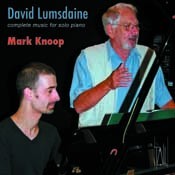
David Lumsdaine complete music for solo piano
Tall Poppies TP198 (external link), released February 2009Tall Poppies Records (external link) is proud to release this important recording of the complete music for solo piano by Australian composer David Lumsdaine (external link). The music, spanning nearly 30 years of Lumsdaine’s compositional life, contains important markers of his compositional concerns and how they have changed through the years. It reveals David Lumsdaine as one of our most important compositional voices, and how important Australia is to him, especially during his residence in the UK. He is clearly fascinated with Australian birdsong, and has a profound relationship with the music of Bach.
In this recording he has the perfect advocate in Australian pianist Mark Knoop. Knoop’s performances are astonishing in their virtuosity and their respect for the music. It is hard to imagine a more perfect rendition of this tough but immensely rewarding music. This recording was funded by the Australia Council (external link).
| David Lumsdaine | Kelly Ground | 196620 |
| David Lumsdaine | Ruhe sanfte, sanfte Ruh’ | 197418 |
| David Lumsdaine | Cambewarra | 198021 |
| David Lumsdaine | Six Postcard Pieces | 19945 |
Reviews of this recording
David Lumsdaine (external link)’s piano music is certainly no easy stuff, but Mark Knoop navigates fearlessly and almost effortlessly through these exacting scores. One forgets about all the intricate working-out behind the music and its formal and technical complexity and is eventually impressed by the music’s sheer expressive strength and energy.
read full review
David Lumsdaine (external link) withdrew everything of his composed before 1964 when he completed his first acknowledged work Annotations of Auschwitz (1964 – soprano and ensemble). This was followed by Dum medium silentium (1965, rev. 1975 – mixed chorus), Easter Fresco (1966, rev. 1970 – soprano and four players) and Kelly Ground for piano; the latter completed in 1966 and first performed that year by Roger Smalley.
In the 1950s Lumsdaine contemplated composing an opera on Ned Kelly in collaboration with Peter Porter. This eventually came to nothing, possibly because opera as a musical genre was deemed out of fashion especially by composers who were rather attracted by the new musical trends of the time as was Lumsdaine. The idea, however, was not completely forgotten. Though it is not programmatic in any way, Kelly Ground obliquely alludes to some subliminal programme as each of the strophes makes clear, such as “Kelly’s return to Consciousness on the morning of his Execution”, “His view along the Ground to the foothills of the Wombat Ranger”, “A Nocturne on the Plain”, “A clamorous Aubade”, “An Aria for Kelly focusing simultaneously on Inside and Outside of the Cell” and “The Hanging”. This, however, must not be taken at face value for Kelly Ground is a purely abstract piece in which much has been predetermined beforehand. In it the composer attempted to achieve something that he had been aiming at in several of his now discarded works: rhythmic flexibility and fluidity within a tightly controlled working-out of the basic material. In this respect, I can best refer to Michael Hall’s thoroughly researched analysis in his book Between Two Worlds – The Music of David Lumsdaine (Arc Publications – 2003). As Michael Hooper rightly remarks in his excellent insert notes, this substantial work falls into roughly two cycles. The first (Strophes 1 to 5) is mostly virtuosic whereas the second is “still and contemplative”. The music certainly brings a number of composers to mind such as Boulez, Webern and Messiaen. The latter is also a presence because Lumsdaine weaves some birdsong into his own music, albeit in a much less systematic way than the French composer.
Ruhe sanfte, sanfte ruh’ alludes to the final chorus of Bach’s St Matthew Passion, the first notes of which open the piece. “The work is a meditation – on the religious level a meditation on the untimely death of Christ, on the personal level on the untimely death of Jannice, the wife of Peter Porter, for whom the work is a memorial” (Michael Hall, op.cit.). The three notes from Bach’s chorus permeate the entire work and are sometimes transformed into soft bells.
In the nineties, Lumsdaine produced five pieces sharing the title of “Soundscapes”. These were in fact recordings of birdsong made in different places in Australia. One of them was made in Cambewarra Mountain located some hundred kilometres South of Sydney. Cambewarra is heard here is a completely different piece of work although birdsong is clearly present but in a personal way. It differs from Messiaen in not aiming at imitation or transcription of birdsong as the French composer did in so many of his works. The music partly reflects what Lumsdaine achieved in his series of soundscapes, in that foreground may suddenly become background and vice versa. This creates some abrupt changes of perspective.
By comparison, Six Postcard Pieces is a set of tiny miniatures in which a maximum is achieved with a minimum of notes, the mark of a true master. As Lumsdaine humorously remarks, “by the time you’ve read the programme note, they’re finished…”.
David Lumsdaine’s piano music is certainly no easy stuff, but Mark Knoop navigates fearlessly and almost effortlessly through these exacting scores. One forgets about all the intricate working-out behind the music and its formal and technical complexity and is eventually impressed by the music’s sheer expressive strength and energy.
hide full review
I feel this is an important CD. The music is strong and always commands the listener’s respect; the performances by Mark Knoop are technically and emotionally compelling. … Very highly recommended.
read full review
Because Lumsdaine (external link) has spent most of his life in England, some would say that he cannot truly be considered an Australian composer in the usual sense. Yet he strongly feels to be so, has made frequent trips back here, features Australian landscape and history in the titles of various works, and has shown a keen interest in local ornithology by making various field recordings of Australian bird calls, This CD presents his entire solo piano music for the first time, with three major works (including two world premiere recordings), and will add significantly to his reputation as one of our most important composers.
The late Don Banks described Kelly Ground (1966) to me years ago as a fine piece, and in fact it contains keyboard gestures similar to those in Banks’s own Pezzo Drammatico and Richard Meale’s Coruscations. I suspect it has not been too frequently performed and never recorded before simply because of the formidable challenges it poses to performer and listener alike. The material stems from an intended opera about the bushranger Ned Kelly, a project subsequently abandoned. It is largely organised serially in sequential cycles and strophes, and in some respects sounds like much of the post-war European avant-garde music played frequently at festivals of the period, such as Darmstadt and Donaueschingen. Consequently, it now inevitably seems a little dated, but the presence of a powerful musical mind always predominates. The second and third cycles, which represent Kelly’s hanging, are especially moving: elegiac, mesmeric and utterly individual.
Then Ruhe sanfte, sanfte ruh’ (1974), to my mind the highlight of the disc. Described by the composer as “a meditation on the last chorus of Bach’s St Matthew Passion”, it is cast in three sections of diminishing durations. Although Bach’s score is never quoted literally, it provides a fundamental atmosphere, “a motivic and harmonic web” (Lumsdaine’s words) from which the piece evolves. The way whereby the ominous opening C minor chord constantly returns in a stream-of-consciousness manner lends the first movement an extraordinary sense of suspense; the same procedure also appears in the brief finale. Like Kelly Ground, this piece features haunting bell-sounds—echoes of Martinů, Messiaen and others.
The third offering is Cambewarra (1980), a three-movement piece demonstrating the composer’s increasing interest in Zen Buddhism. Much of the often complex material utilizes Lumsdaine’s beloved birdcalls (Messiaen again!) from the region of that name near Kangaroo Valley, New South Wales, prefiguring certain structural processes evident in Cambewarra Mountain, one of the birdsong recordings mentioned earlier. In particular, this relates to overlapping techniques and the ways whereby structural freedom can therefore result. The first movement is essentially tranquil, the second becomes far more active, and the close of the last movement reaches an obsessive climax, with frenetic repeated notes and complex figurations. For my taste the piece seems somewhat overlong (31’02”), but contains absolutely breathtaking technical and sonic effects: not for the faint-hearted listener!
In complete contrast, the disc concludes with Six Postcard Pieces (1995), a short collection of delightful miniatures with traditional titles (March, Toccata, etc.).
I feel this is an important CD. The music is strong and always commands the listener’s respect; the performances by Mark Knoop—Australian pianist/conductor living in London—are technically and emotionally compelling; the sound quality is pleasingly ambient; the presentation is appealing; the overall timing (almost 80’) is generous; and the annotations (mainly) by Michael Hooper—Sydney mandolinist/musicologist currently researching Lumsdaine’s music at York University—are exceptionally insightful and detailed.
Very highly recommended.
hide full review
Mark Knoop makes an ideal interpreter, conveying the full range of these subtle interactions without ever crossing into inappropriate histrionics.
read full review
David Lumsdaine (external link)’s piano music, as heard on this excellent disc, is rich in technical intricacies. One can take analyses of these constructions on faith, but Lumsdaine’s intellectual approach is apparent as soon as one attempts an initial description of the music: one hears groups of pitches rotating and transforming, melodic and rhythmic contours evolving, the careful control of register and density. (Mark Knoop makes an ideal interpreter, conveying the full range of these subtle interactions without ever crossing into inappropriate histrionics.) This is most apparent in Ruhe sanfte, sanfte ruh’, an extended fantasy on the opening chords of the Bach chorale, which ghost the music’s 20-minute span, gently pushing open a window into the unfolding of Lumsdaine’s technique.
In the opening section of Kelly Ground, one can hear that the (serial) pitch organisation is arranged to determine that similar pitch collections tend to cluster together. There is also a restricted gamut of gestural possibilities: predominant is a two-note ‘spring’ upwards, like a rabbit hop. Such factors – similar examples can be found throughout this CD – contrive to give Lumsdaine’s music a certain consistency of grain, out of which emerges a sustained expressive character.
Thus, although the music is highly organised, there is never a sense of contrived abstraction. In Kelly Ground, the overwhelming mood is a sombre one of energies and freedoms restrained. This suppression is deliberate, of course, a compositional attempt to tame an infinite and anarchic field of possibilities. Over the course of the piece’s six sections, from Ned Kelly’s awakening on the morning of his execution to his eventual hanging, the musical shackles are slowly released, but the music loses cohesion and purpose. In the final section, the hanging itself, the sprung figures from the opening return to more morbid effect in slower rhythm and with portentous bass undertones, swinging like bells or a body. With Kelly’s death, the fizzing energy of the earlier movements has become petrified, the musical tension lying in the relative merits of various degrees of control and freedom.
In the late 1970s, Lumsdaine began making field recordings of Australian wildlife and landscapes. In his excellent sleevenote, Michael Hooper writes of Lumsdaine’s self-imposed rules for producing and editing such recordings, to do with fidelity to the diurnal cycle, to location and to season. In one technique, several recordings would be made in a single location, but with the microphones pointing in different directions each time, thus capturing in sound a sense of perspective and the spatial interrelationship of the landscape and its inhabitants. It is this process of objective observance within a sparsely occupied three-dimensional space that is the subject and effect of the piano piece Cambewarra. Whether there are birdsongs here or not (and this isn’t sub-Messiaen exercise in transcription) doesn’t matter: one hears musical objects simply presented and organised in contrasting temporal and spatial relation to one another. It is the way that the understanding of one’s environment is structured through phenomenal experience that is captured, more than the local details of that environment. As with Kelly Ground, in Cambewarra Lumsdaine again approaches programmatic content, whilst avoiding the temptations of crude mimesis.
An Australian landscape and a national hero. One is tempted to uncover an underlying nationalism, but to do so would be to miss the point. Despite his titles, Lumsdaine doesn’t deal in musical representations – or at least, not in any straightforward, unmediated way. He avoids parochialism by unearthing from such stories and locations structures that speak to universal experience: the tensions between freedom and a determined society, the sensation of open space and one’s own environment. It is such steadfast belief in the power of technical abstraction to articulate human concerns that gives Lumsdaine’s music its profound beauty.
hide full review
Lumsdaine (external link) sets virtuoso pianist Mark Knoop to work with scenes from the final day in the life of Ned Kelly.
read full review
Lumsdaine (external link) sets virtuoso pianist Mark Knoop to work with scenes from the final day in the life of Ned Kelly. Each scene, or “strope”, to use his term, has a specific title to indicate what he wants to be projected, musically, at any given time. The key to Ruhe sanfte, sanfte ruh' is Bach, then when it comes to Cambewarra, his instruction is to make the piano do birdsong, though whether there is enough variety in what birds sing to sustain it for a full half hour plus length could be debated. Postcard Pieces give the nod to Beethoven. Four works proving the consistency that Lumsdaine has maintained right through this 30-year period. The piano, however, being a musical instrument, is not best equipped to express such visual concepts, or to understand the significance of what the composer has in mind, so although this sounds like an interesting range of subjects, exactly the same music could have done for an entirely different set. His Kelly ideas do not sound that different from the ones Lumsdaine still had for his postcards. A lot of his initial brittleness has worn off during that time, however, and he directs Knoop to every corner of the keyboard, with much to challenge the most expert of pianists. Professional musicians (pianists) are likely to appreciate a CD like this.
hide full review
It's invigorating to hear these three major piano works again, especially in such accomplished performances by Mark Knoop.
read full review
Though David Lumsdaine (external link) has been based in Britain since the early 1950s, his music has remained firmly rooted in the history, culture and landscape of his native Australia. It's invigorating to hear these three major piano works again, especially in such accomplished performances by Mark Knoop; all were important landmarks in Lumsdaine's development through the 1960s and 70s, when his music was evolving rapidly. Kelly Ground, from 1966, was one of the scores that established him as a force to be reckoned with in British new music, and it remains an impressive achievement: an unlikely melding of a musical language acquired from the total serialism of Stockhausen (external link) and Boulez with a dramatic scheme based upon the final hours of famous outlaw Ned Kelly. In the 1974 Ruhe Sanfte, Sanfte Ruh', the final chorus from the St Matthew Passion is the scaffolding on which Lumsdaine builds a muscular, uncompromising musical argument. And the more contemplative textures of Cambewarra, from six years later, evoke the landscape and birdsong of New South Wales.
hide full review
Mark Knoop is a dedicated advocate of cogent precision.
read full review
David Lumsdaine (external link) belongs to that group of imaginative Australian modernists who adopted and quickly moved beyond the postwar European language.
Broad-ranging in intellectual scope, his music remains more deeply inspired by the Australian landscape than perhaps any other composer. Kelly Ground (1966) is an extended cyclic meditation on Ned Kelly's last day, reminiscent of David Malouf’s The Conversations At Curlow Creek. Ruhe Sanfte, Sanfte Ruh’ brings similarly searching reflectiveness to the final chorus of Bach’s St Matthew Passion.
Cambewarra is a great Australian landscape, its background of birdsong recalling the extended-tone poems of Messiaen’s Catalogue Of The Birds. Six Postcard Pieces compresses the timescale to fleeting miniatures, which, like Chopin’s Preludes or Beethoven’s Bagatelles, simply announce an idea and then leave it.
Mark Knoop is a dedicated advocate of cogent precision. Occasionally one could expand the range of tonal colour but the concentration is compelling.
hide full review
This recording features Ensemble Exposé (external link) conducted by Roger Redgate in performances of Ferneyhough’s chamber music. Most of the works on this disc were composed within a few years of each other, after the composer’s move to San Diego in 1987, during which period he was professor of composition at UCSD, and prior to his subsequent engagement at Stanford University in 2000.
As well as Flurries, the disc includes Trittico per G. S. (Corrado Canonici, solo bass), Incipits (Bridget Carey, viola), Coloratura (Christopher Redgate, oboe, Ian Pace (external link), piano), Allgebrah (Christopher Redgate, solo oboe) and In Nomine a 3.
| Brian Ferneyhough | Flurries | 1997 |
From CD liner notes by Michael Schwalb: “The sounds reproduced here represent a reconstruction of the original form that Ein deutsches Requiem by Johannes Brahms took before its triumphal march through the symphonic choral literature. The score was reworked by the composer Heinrich Poos (born in 1928), who is mainly known for his vocal music and who was Professor of Music Theory in Berlin for many years.
“By distributing the orchestral music between two pianos and adding timpani that function as a kind of orchestral pulse, Poos allows us a glimpse into the compositional workshop of Johannes Brahms and helps us understand the working processes that led to the German Requiem. The workshop nature of this arrangement is an authentic one, both historically and in terms of instrumentation: the pianos used are original instruments from the considerable collection belonging to the West German Radio (WDR). The Erard grand was built in 1839 in Paris; the Collard grand dates from 1849 and has a London provenance. The kettle drums are historical instruments, too, manufactured and played during Brahms’ own lifetime.”
Simone Nold, soprano; Kay Stiefermann, baritone; Ian Pace (external link) and Mark Knoop, pianos; Peter Stracke, timpani; Rupert Huber, conductor
| Johannes Brahms | Ein deutsches Requiem, op 45 (version for soloists, choir, two pianos and timpani by Heinrich Poos) | 186875 |
Reviews of this recording
Insofern kommen Text und Musik bei dieser hervorragenden Aufnahme wegen der historischen Adaption in einen intensiveren, nämlich direckten Dialog, indem Rupert Huber den WDR Rundfunkchor und die Solisten in überzeugender Klangbalance dirigiert.
read full review
Wenn sein Deutsches Requiem für Brahms ein persönliches, um nicht zu sagen: privates Glaubensbekenntnis war, dann sollte diese musikhistorische Bewertung gerade in einer reduzierten Besetzung hörbar sein. Offenbar ließ sich Heinrich Poos, Komponist aus Rheinland-Pfalz, von diesem Gedanken leiten, als er 1979 dieses Werk für 2 Klaviere und Pauken (statt Orchester) arrangierte. Seine Version ist gewissermaßen von Brahms selbst mit einem Klavierauszug (für vier Hände) vorbereitet, somit eine systematische und legitime Konsequenz aus dem ursprünglichen Entstehungsprozess der Komposition. Seltsam schwach wirken nun die trockenen Klänge der historischen Flügel und Pauken zu den weichen Chorstimmen, als ob Brahms durch die Klavierparts in die Rolle eines demütigen Christen gedrängt worden und mit der Autorität der gesungenen Texte konfrontiert sei. Andererseits verstärken die filigranen Klavierklänge bestimmte Affekte wie die kahle Hoffnung im Baritonsolo Denn wir haben hie keine bleibende Statt, und die Pauken unterstützen subtil die metaphysische Geduld in den Versen Denn alles Fleisch, es ist wie Gras. Insofern kommen Text und Musik bei dieser hervorragenden Aufnahme wegen der historischen Adaption in einen intensiveren, nämlich direckten Dialog, indem Rupert Huber den WDR Rundfunkchor und die Solisten in überzeugender Klangbalance dirigiert. Ein Deutsches Requiem had hier wirklich eine unmittelbare Nähe zu Brahms’ kritischem Seelenzustand, den er mit dieser Komponistion trösten wollte.
hide full review
Born in the UK, and now a resident of Melbourne, composer Chris Dench (external link) is a member of the new complexity movement along with Brian Ferneyhough, James Dillon (external link) and Richard Barrett (external link). His music, rich with challenges and detail, is sorely under-recorded and Tzadik is proud to present four of his most extreme and passionate compositions in startling performances by some of the best musicians in the Australian New Music scene. Highlighting this disc is his infamous percussion quartet from 1995, beyond status geometry, which was labeled “unplayable” until this startling and virtuosic performance. A powerful disc of new music from Australia’s most accomplished modernist.
Also includes Permutation City and Passing Bells: Night (Marilyn Nonken, piano).
| Chris Dench | beyond status geometry | 1994-9521 |
| Chris Dench | light-strung sigils | 2002†16 |
Mark Knoop conducts the Libra Ensemble (external link) in David Young (external link)’s song cycle in seven movements. Featuring soprano Deborah Kayser.
| David Young | thousands of bundled straw | 1998-2004* |
Reviews of this recording
Thousands of Bundled Straw is complex, subtly nuanced and infinitesimally crafted. … Every sound and gesture seems precisely calculated, yet the music retains freshness and immediacy. The overall effect of the music is of a minutely staged drama. One listens intently, as you might for the sounds of frogs, crickets, strange characters and even spirits in an unfamiliar mountain village at night, while overhearing murmured conversation from another room. The work is dreamlike, floating just outside consciousness.
The complete CD recording of the Red House publication Guitar Plus One by one of Australia’s foremost contemporary guitarists. Features Geoffrey Morris in duet with Ken Murray (guitar), Elizabeth Sellars (violin), Rosanne Hunt (cello), Elizabeth Barcan (flute), Deborah Kayser (voice), Deirdre Dowling (viola) and Mark Knoop (piano, glasses).
| Gerhard Stäbler | bittersüß | 1994 |
| Itamar Erez | Conversations | *6 |
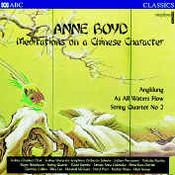
Anne Boyd – Meditations on a Chinese Character
ABC Classics 462 007-2, released 2000| Anne Boyd | Meditations on a Chinese Character | 1996* |
- *
- first performance
- ¶
- first performance in The United Kingdom
- ¿
- first performance in New Zealand
- ‡
- first performance of this version
- †
- first performance in Australia
